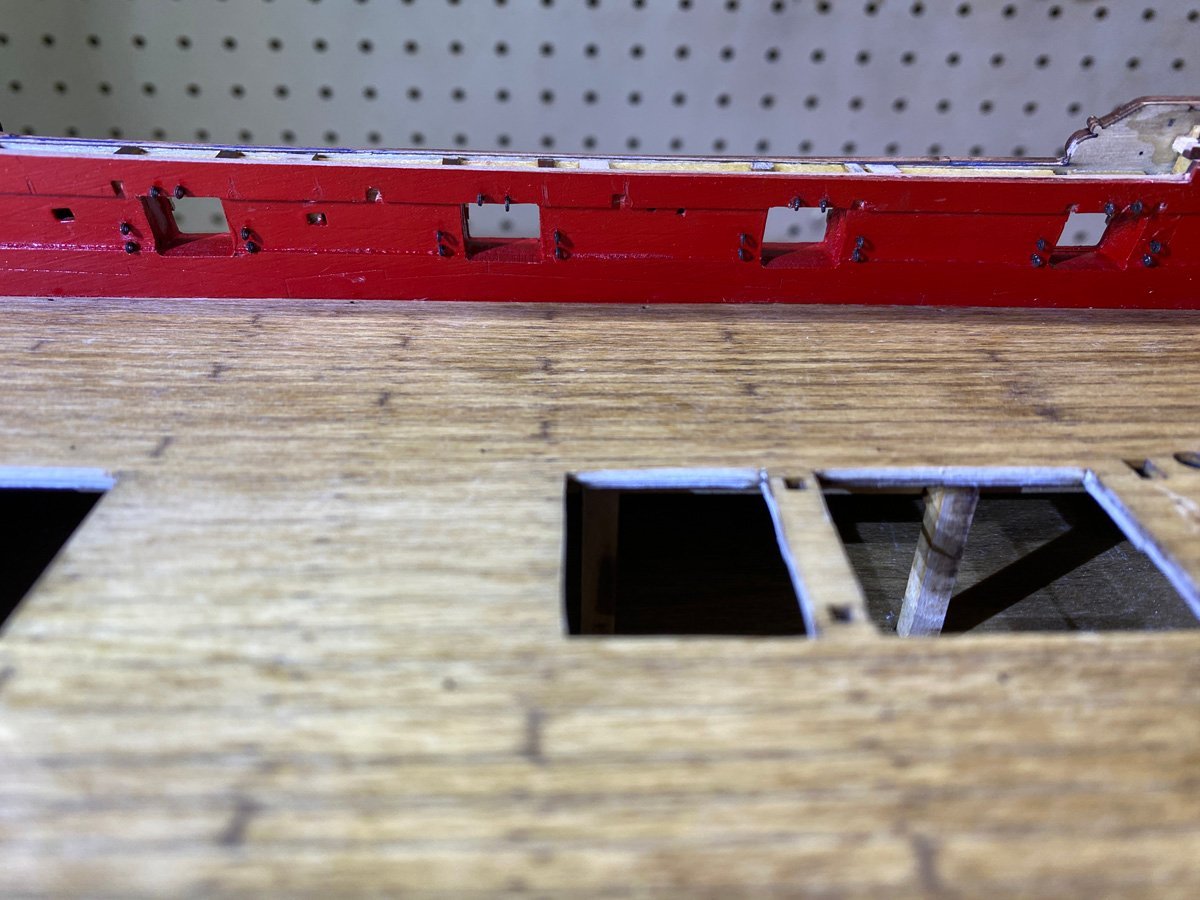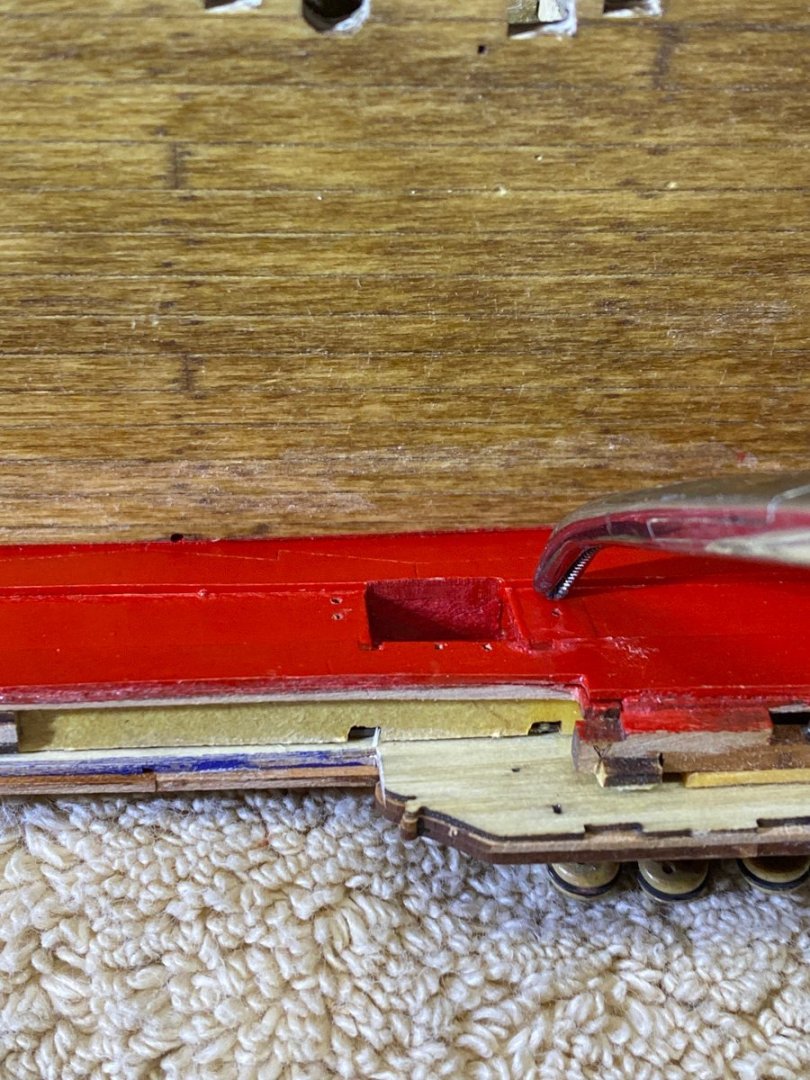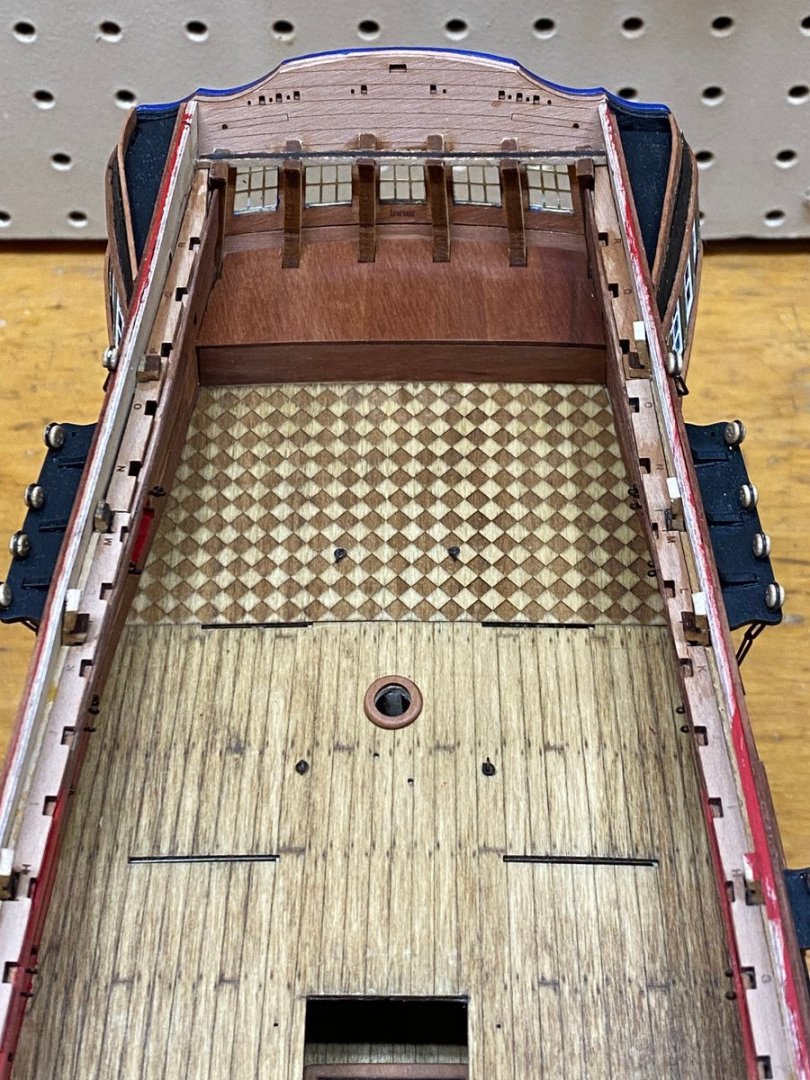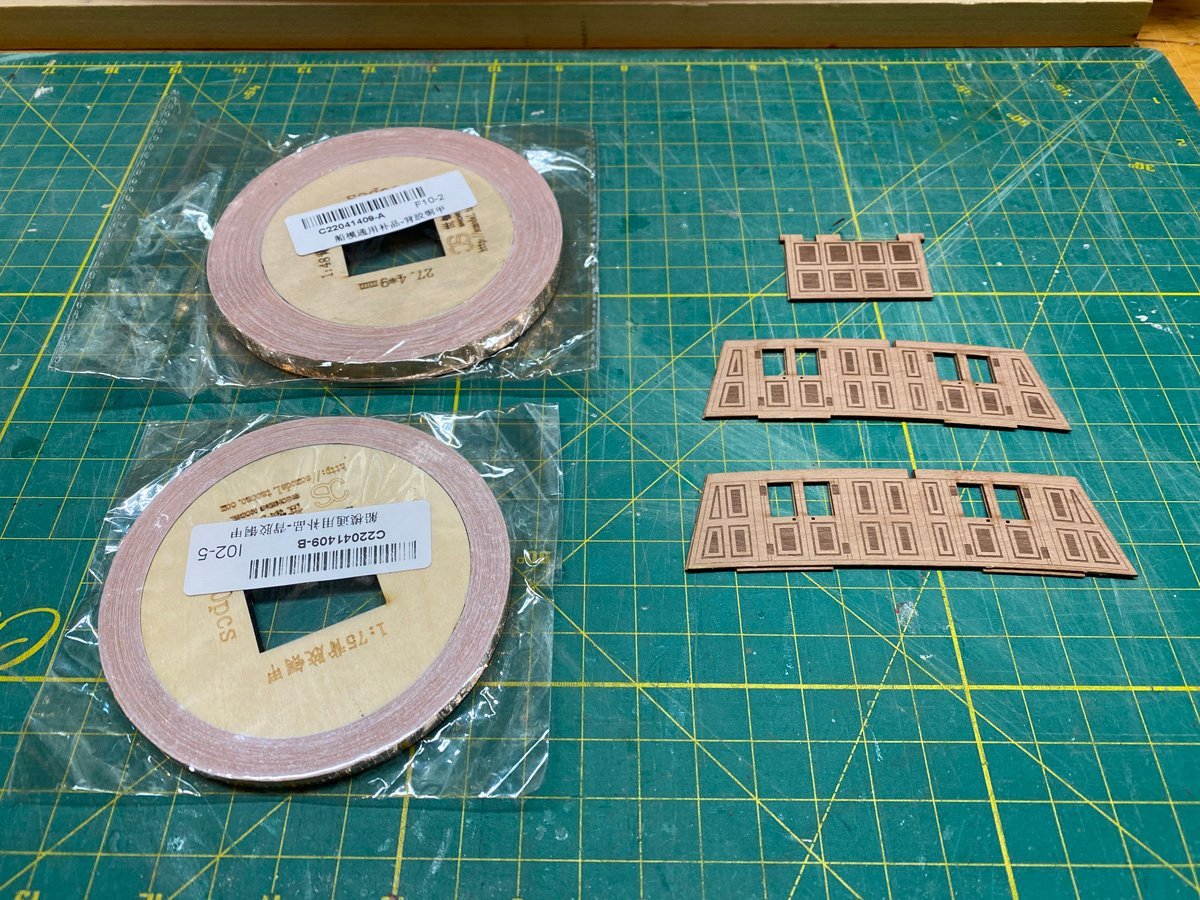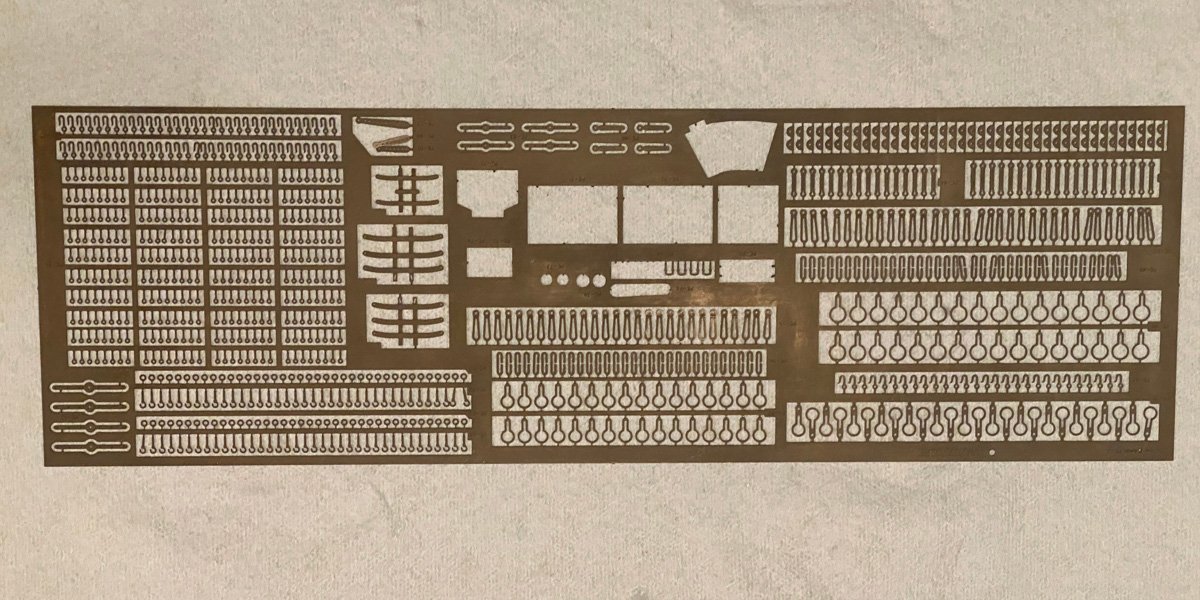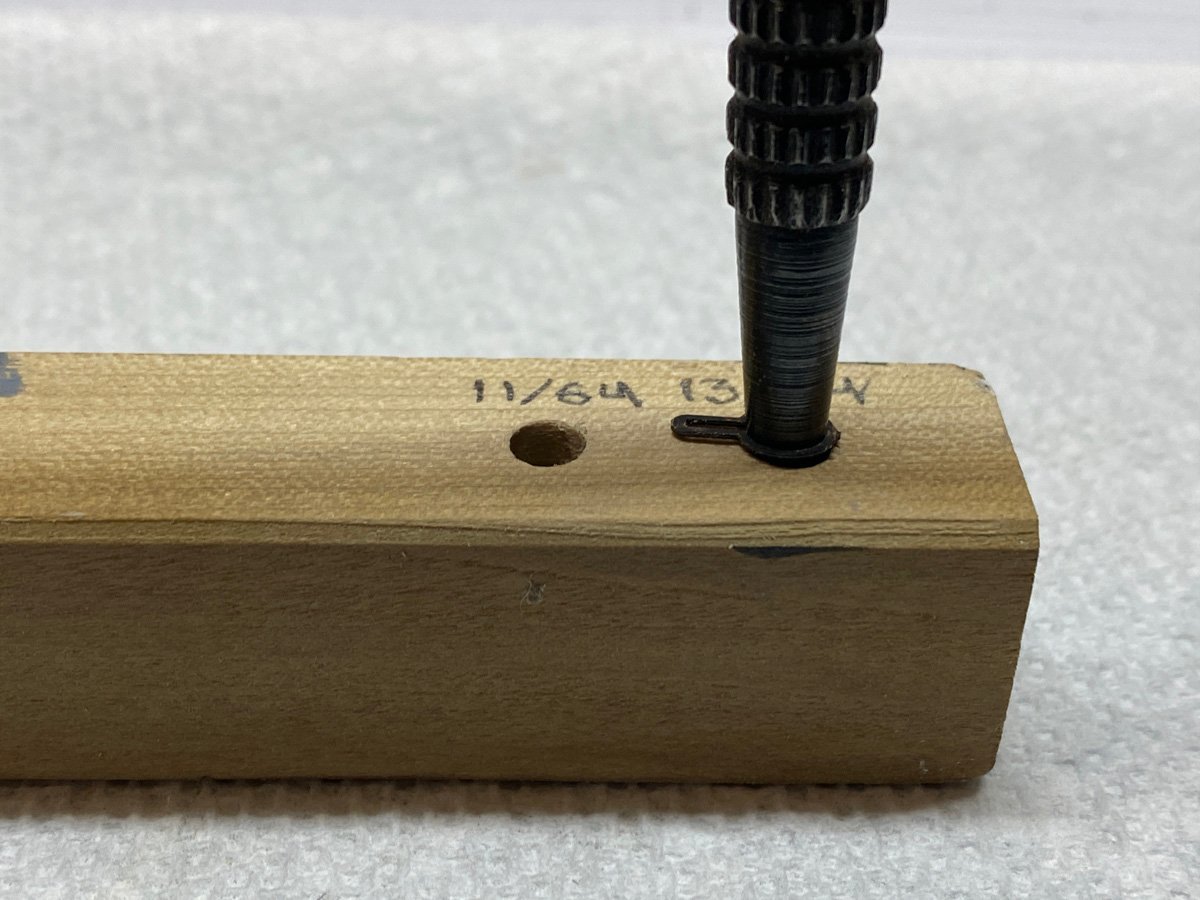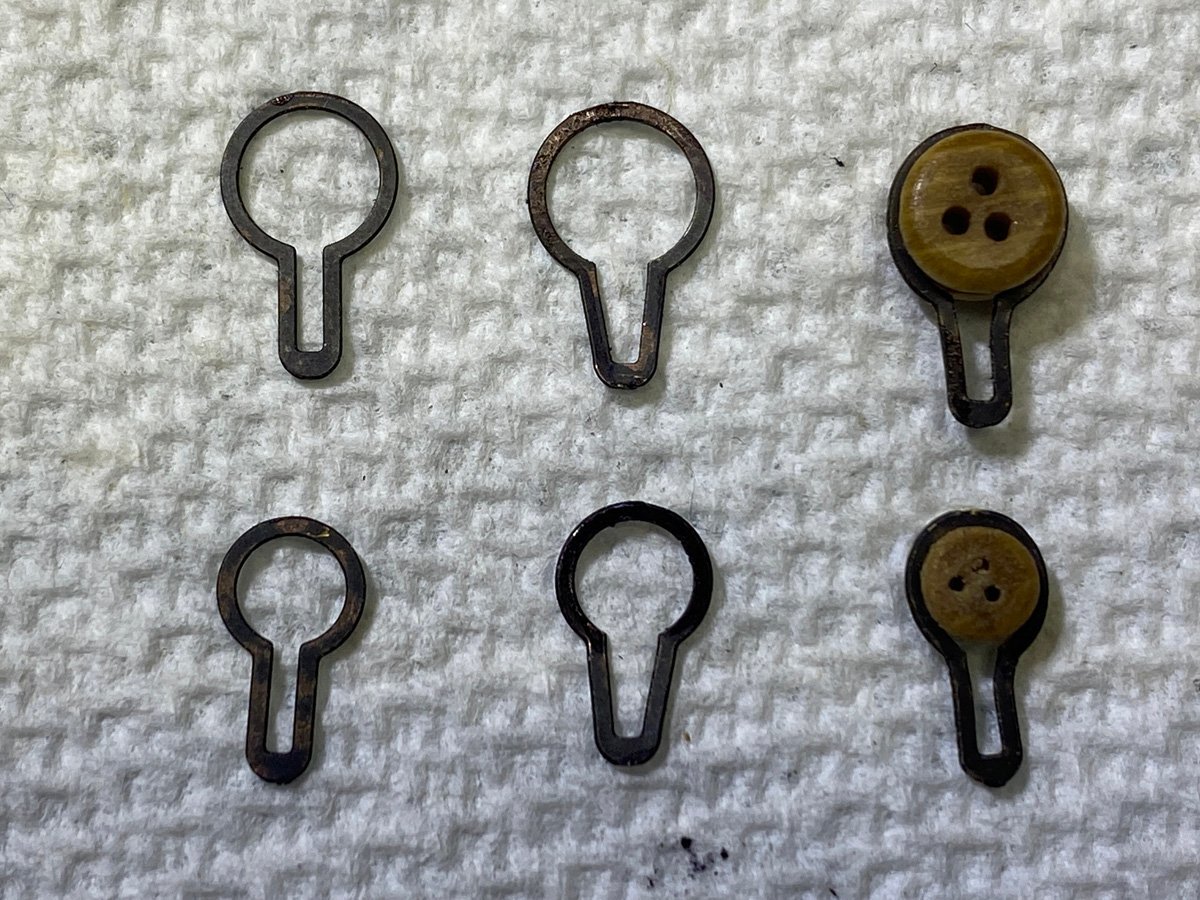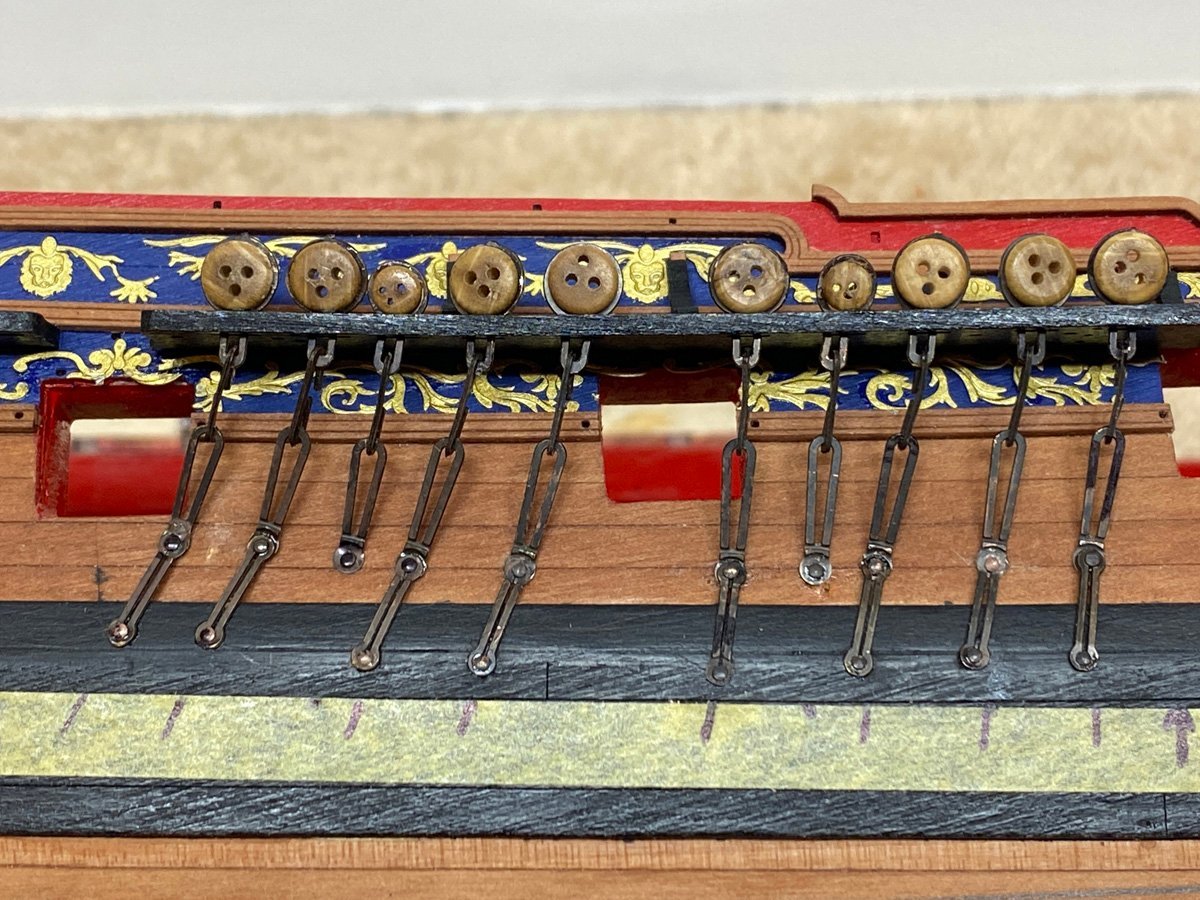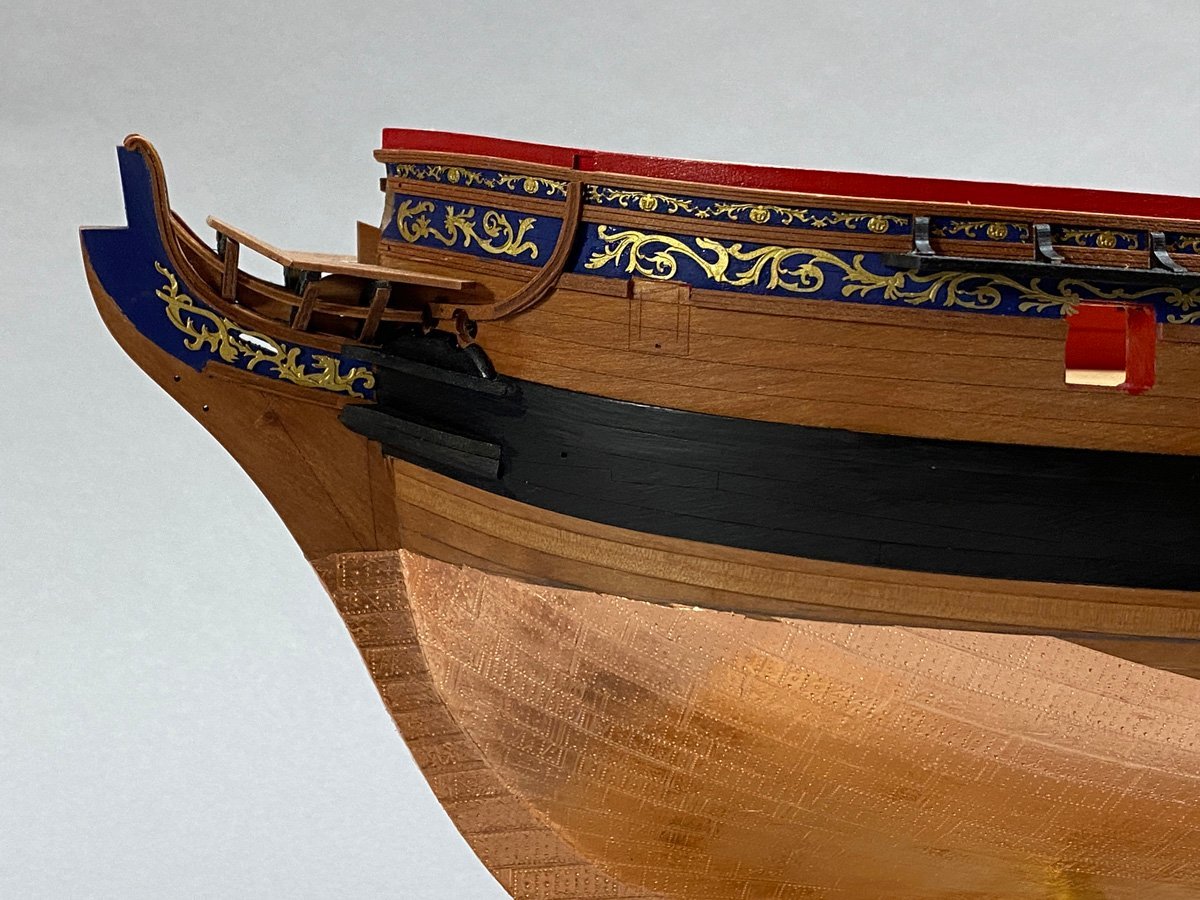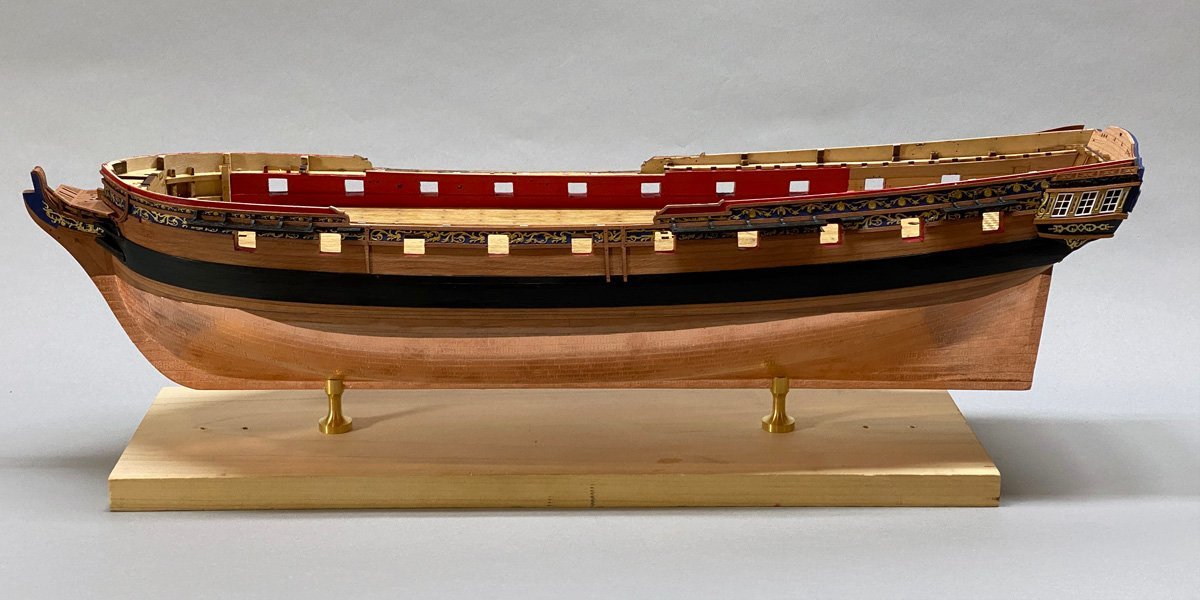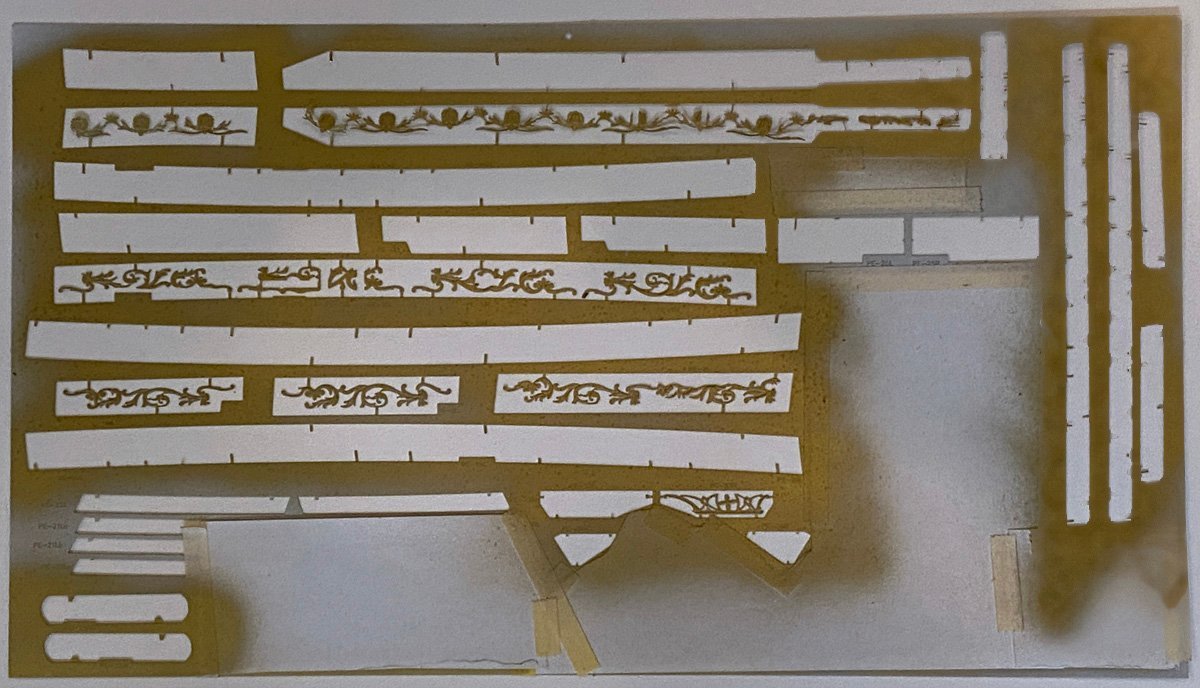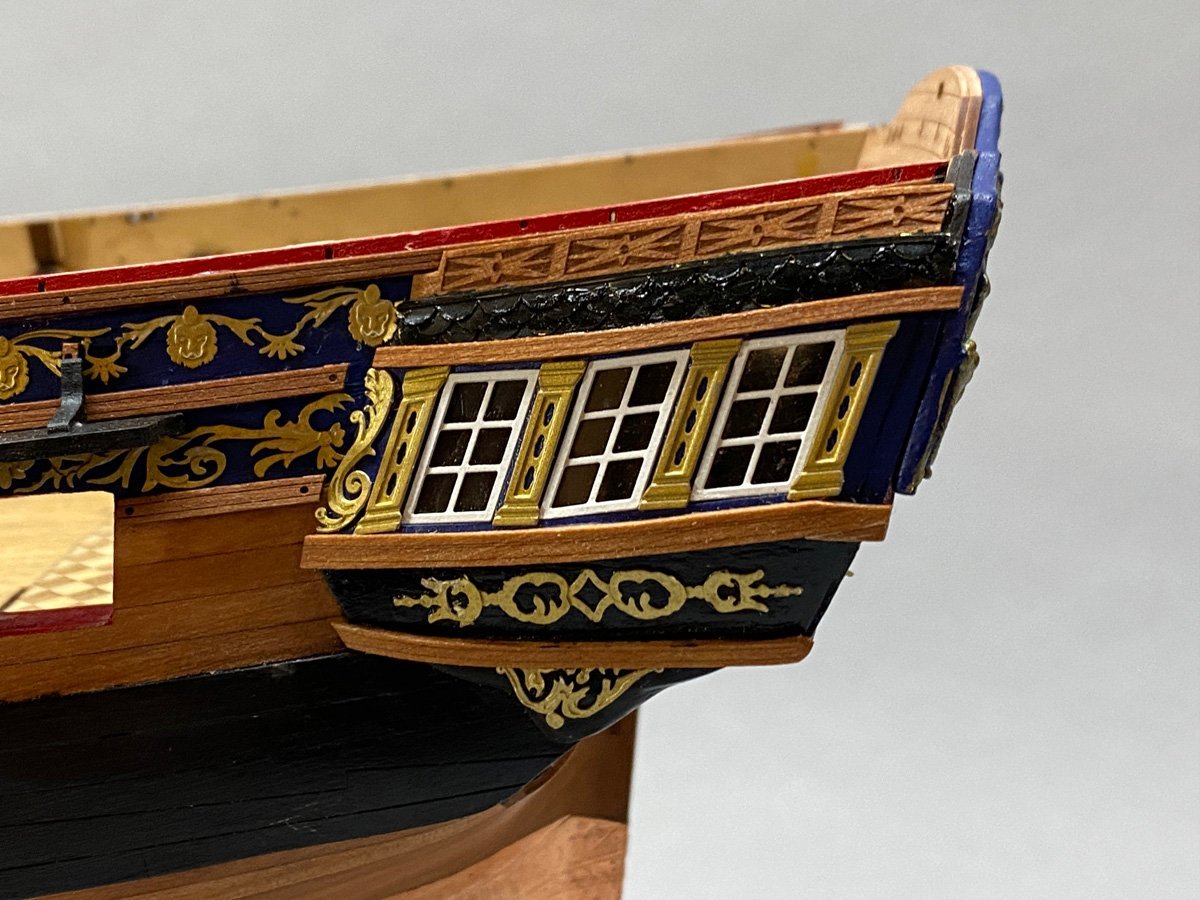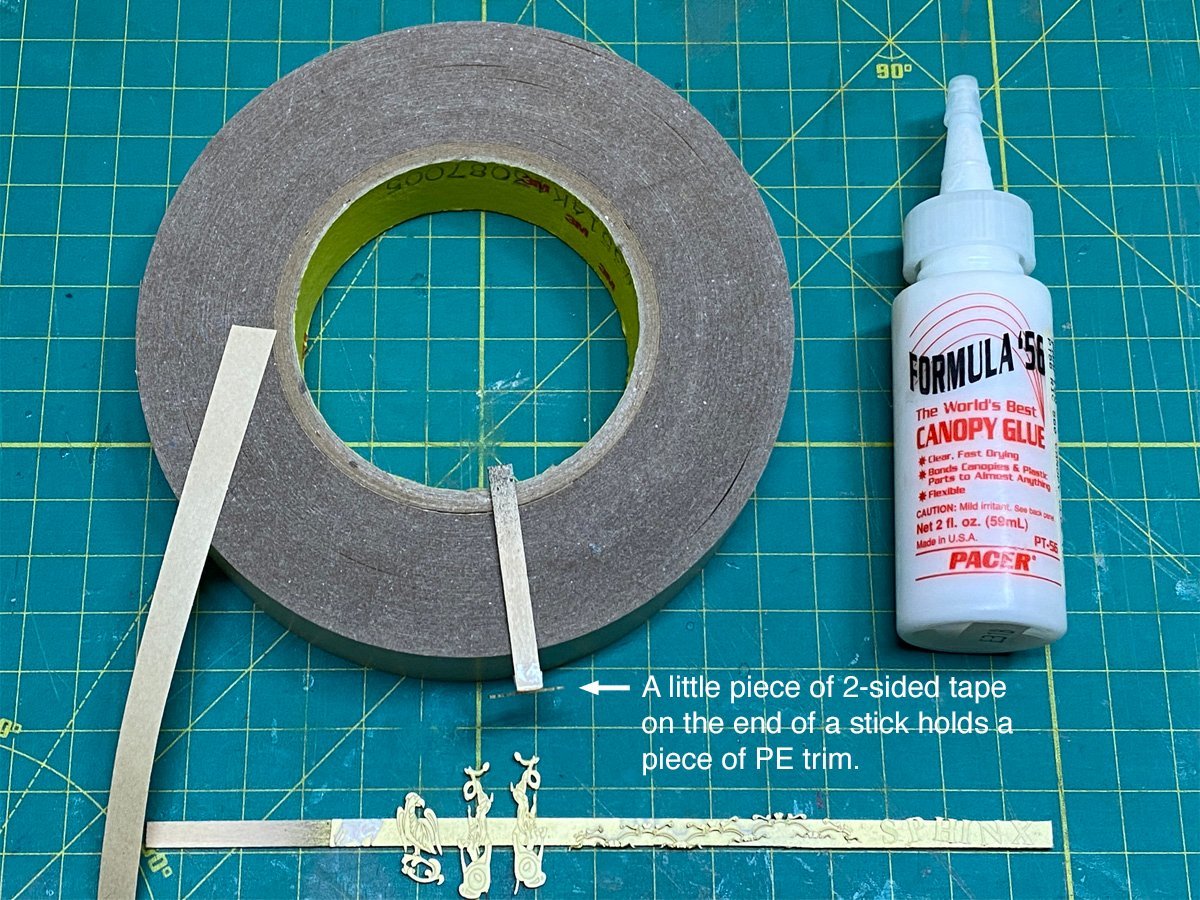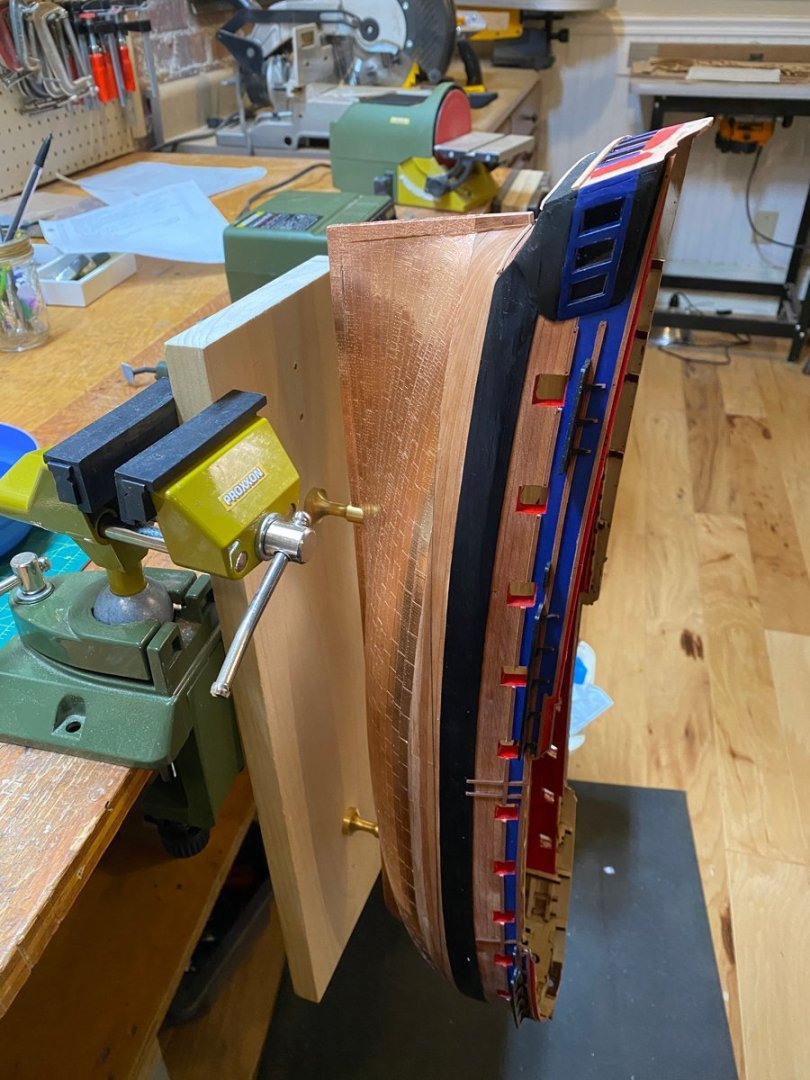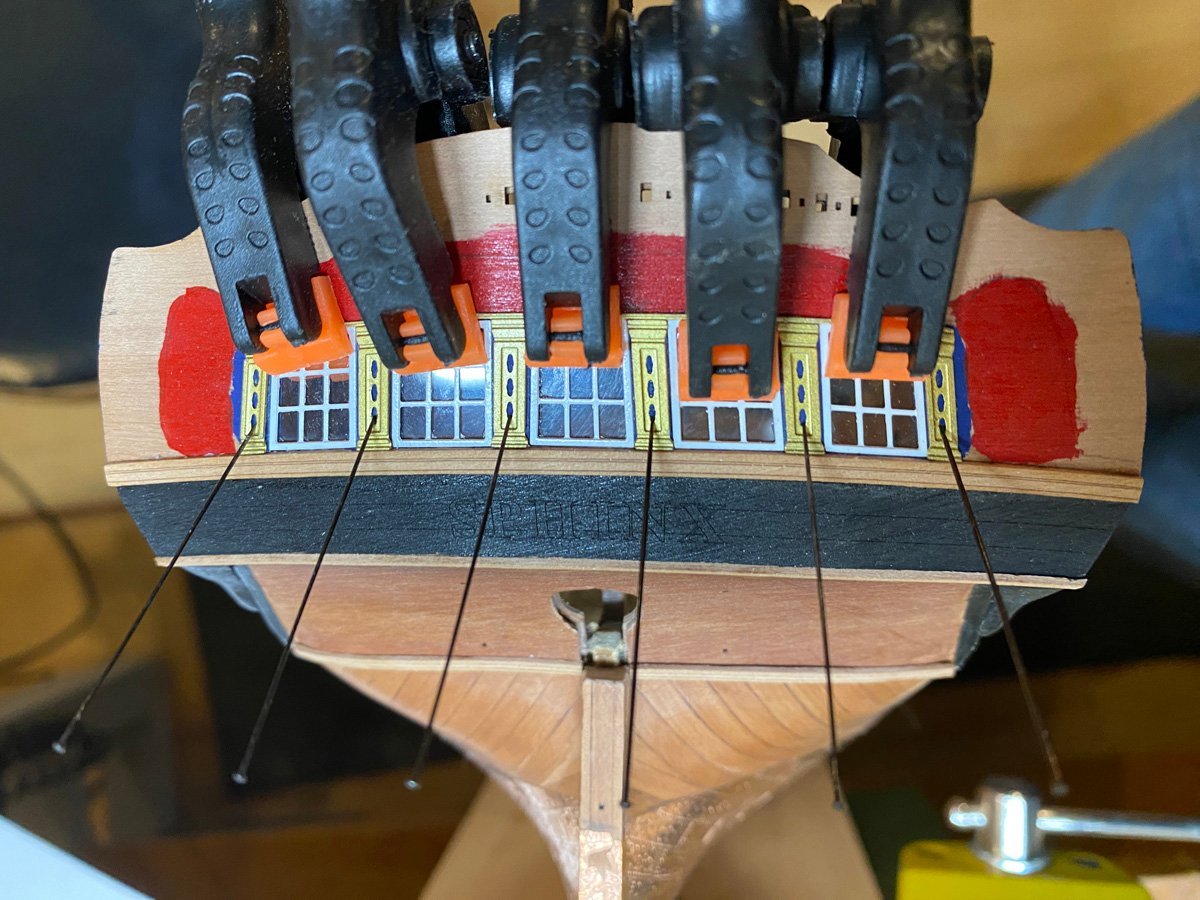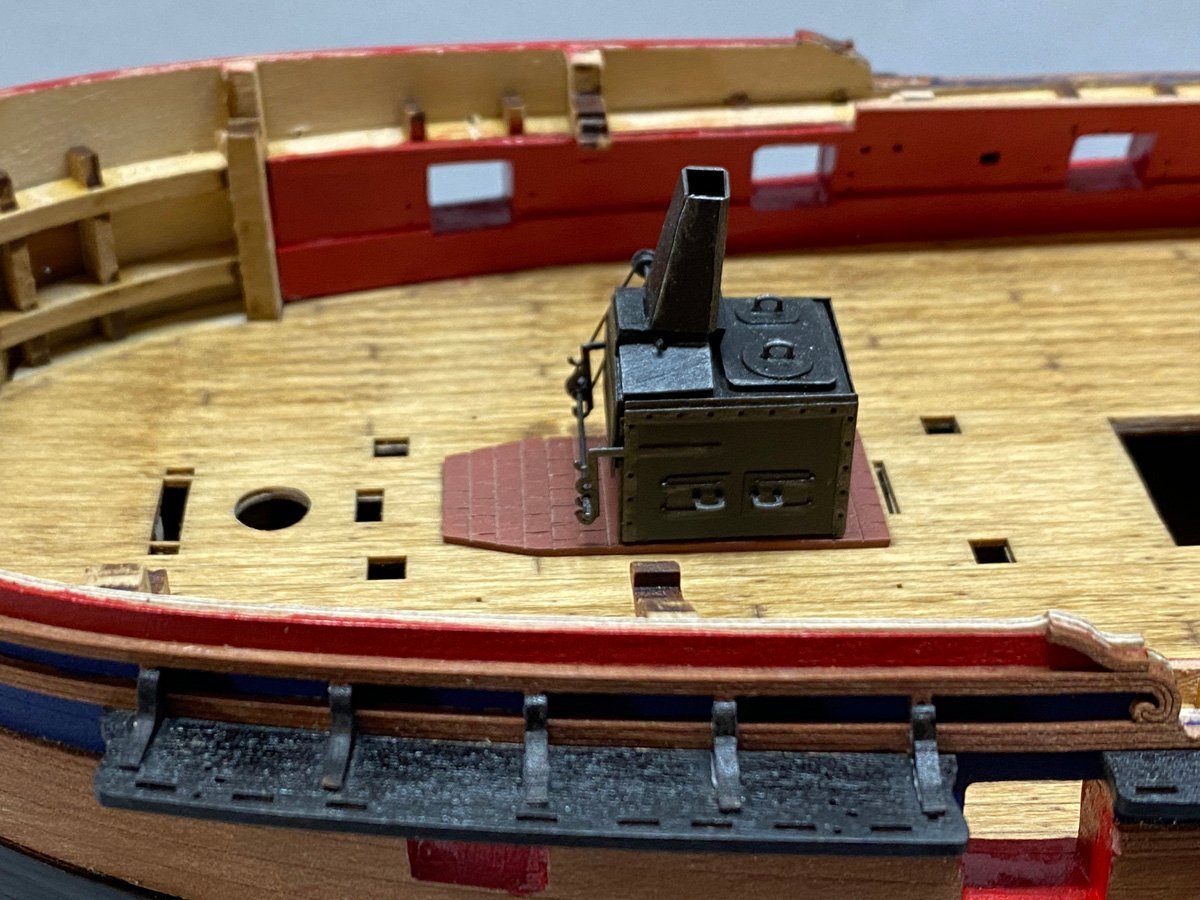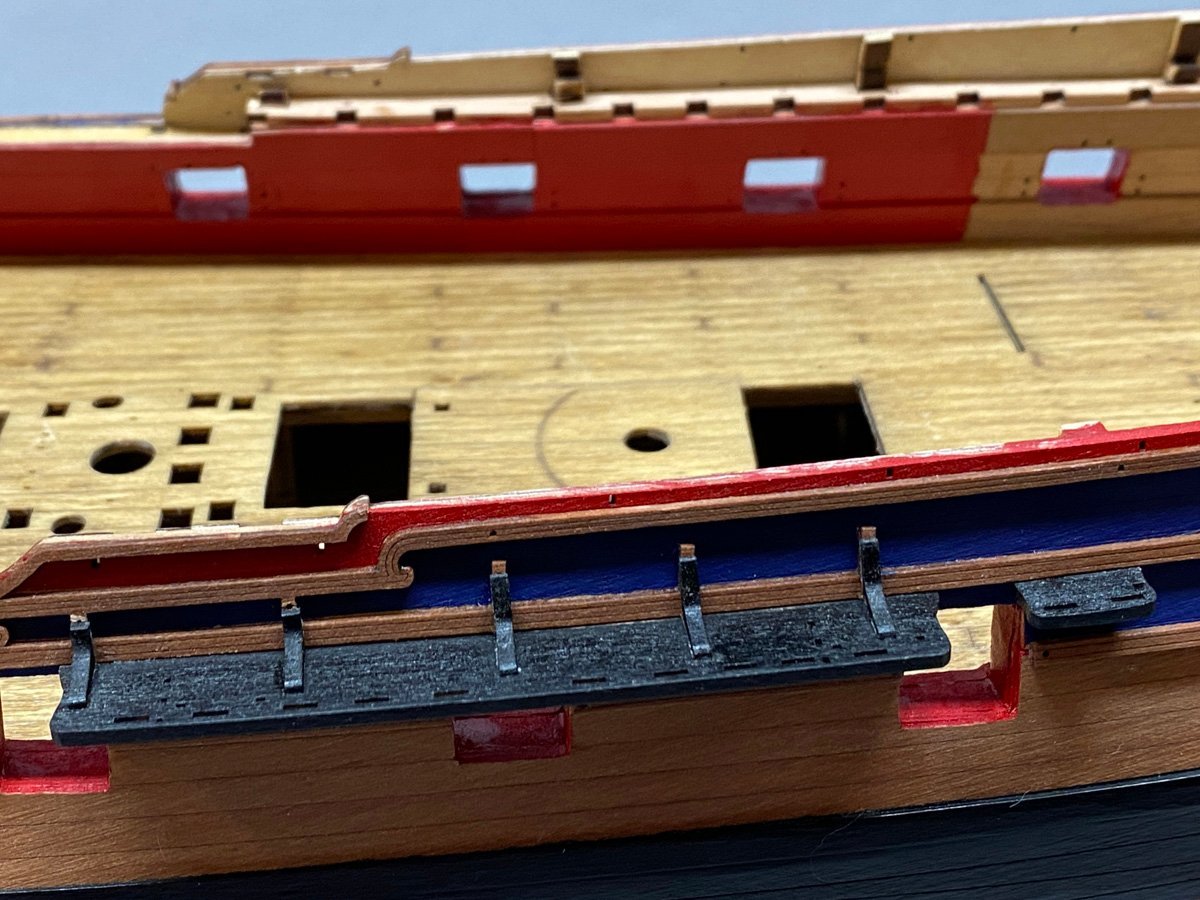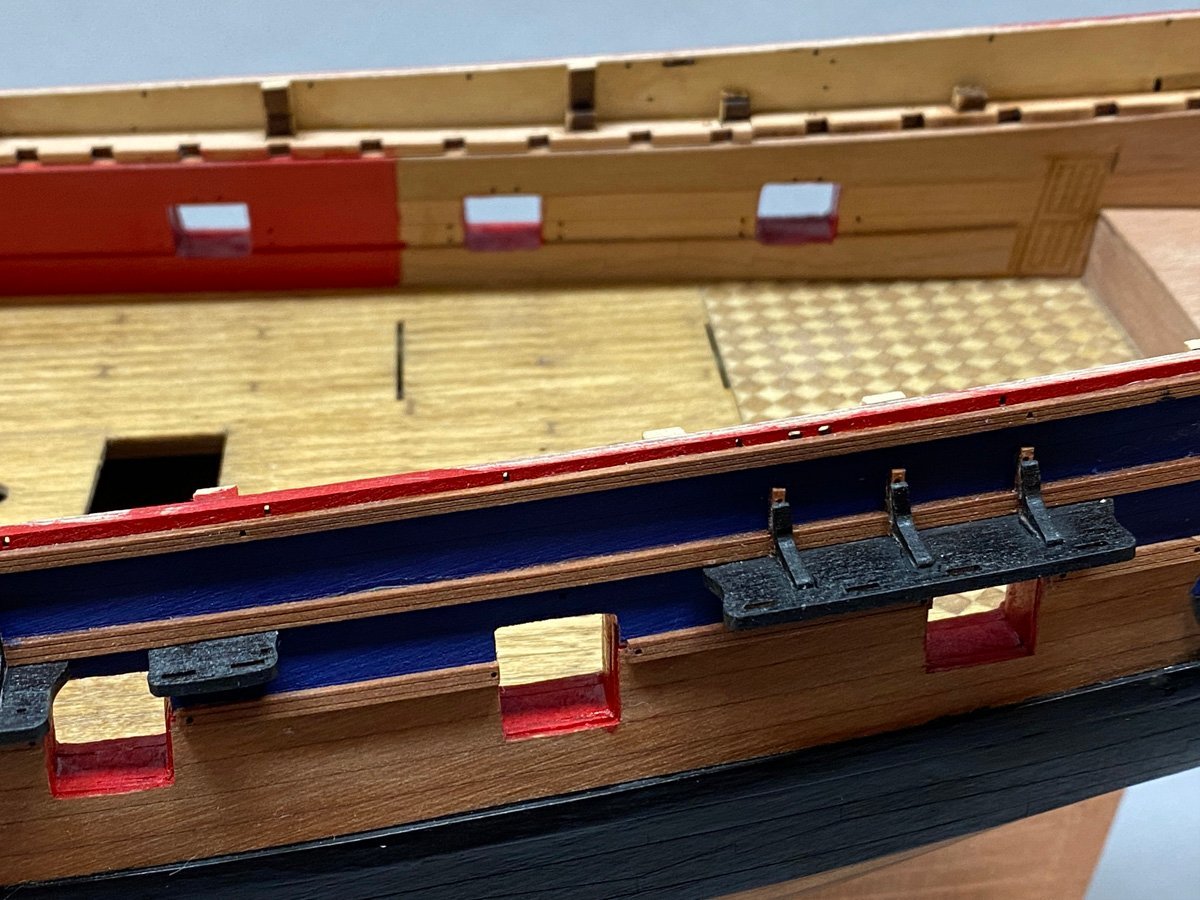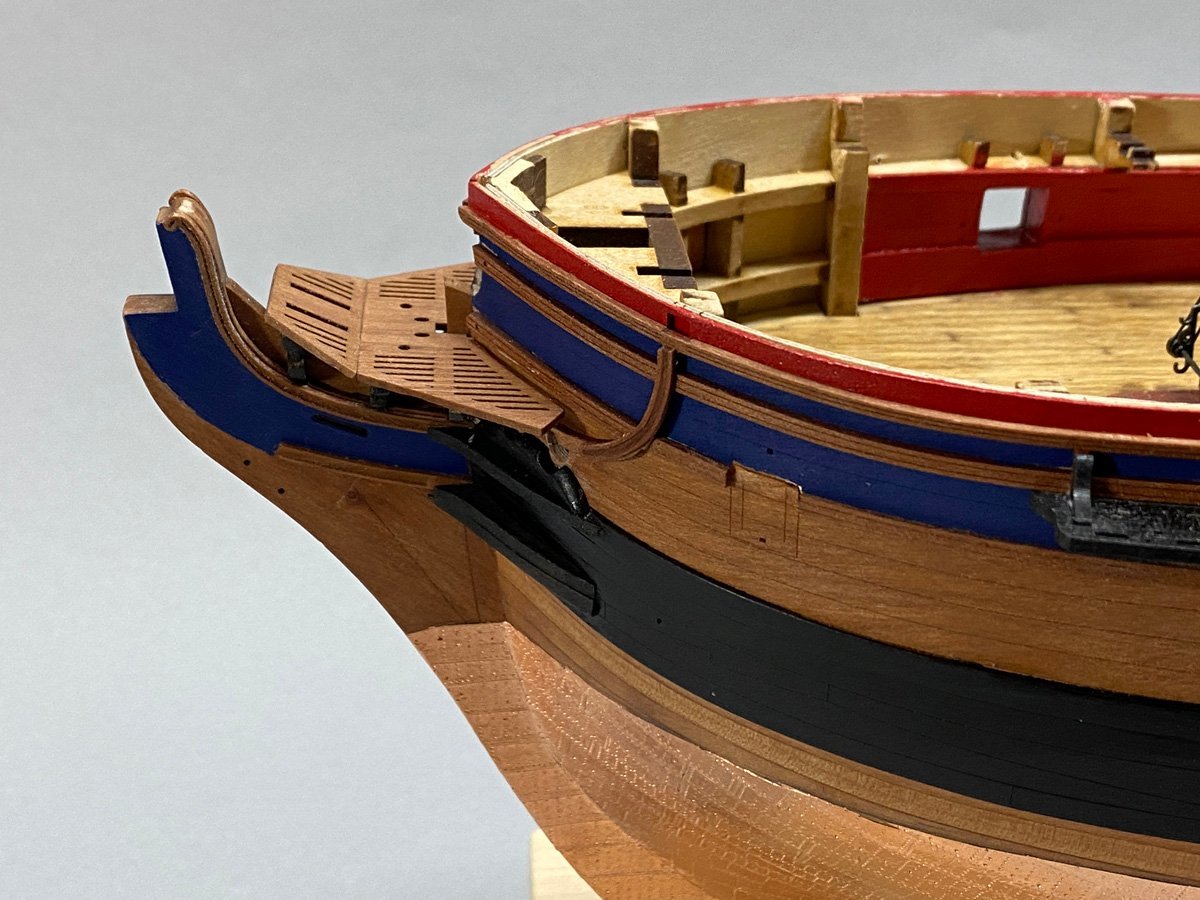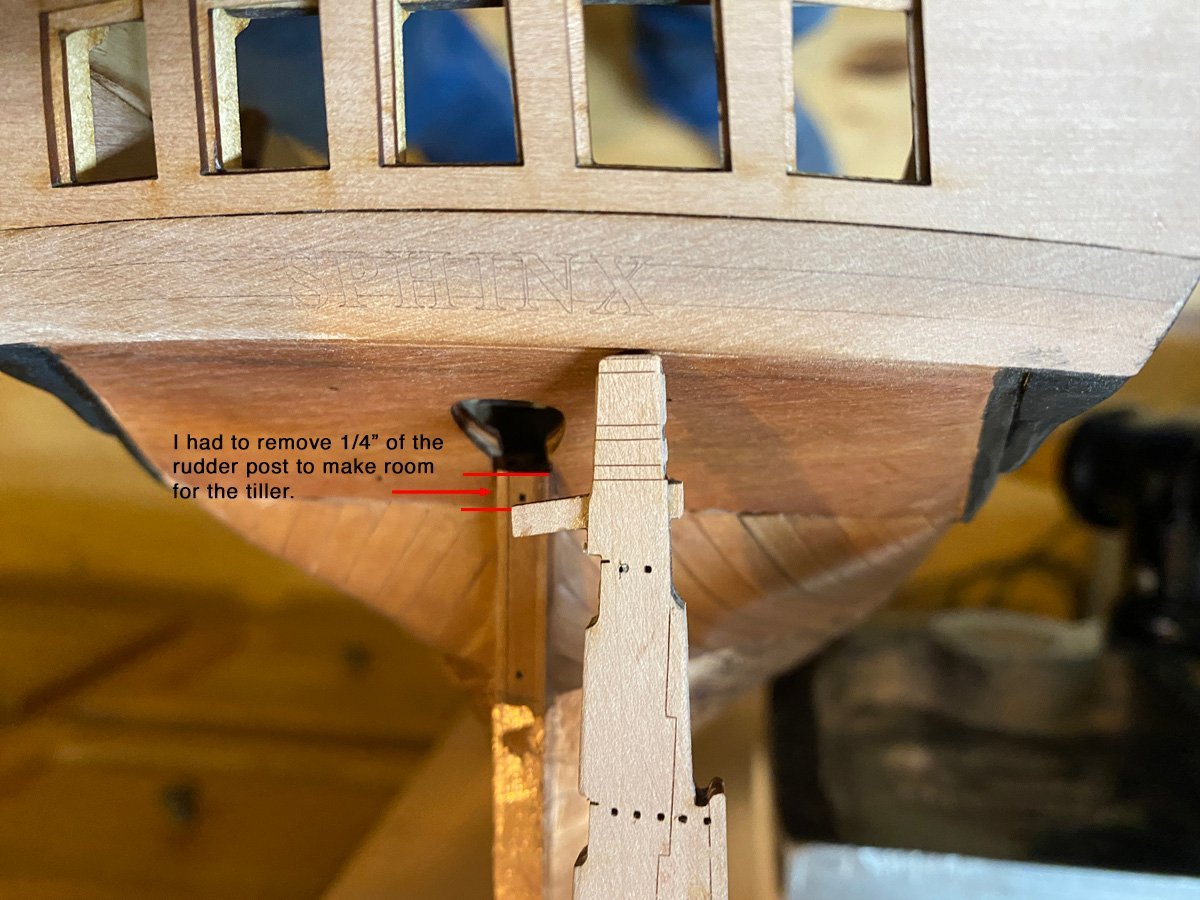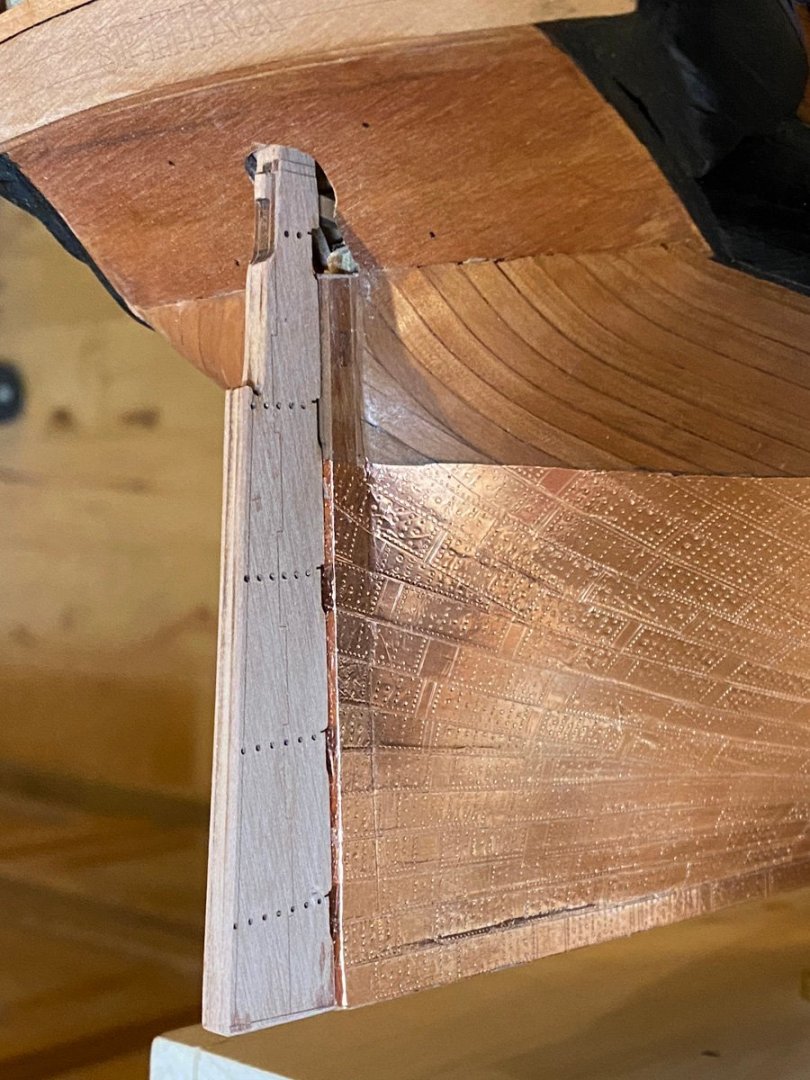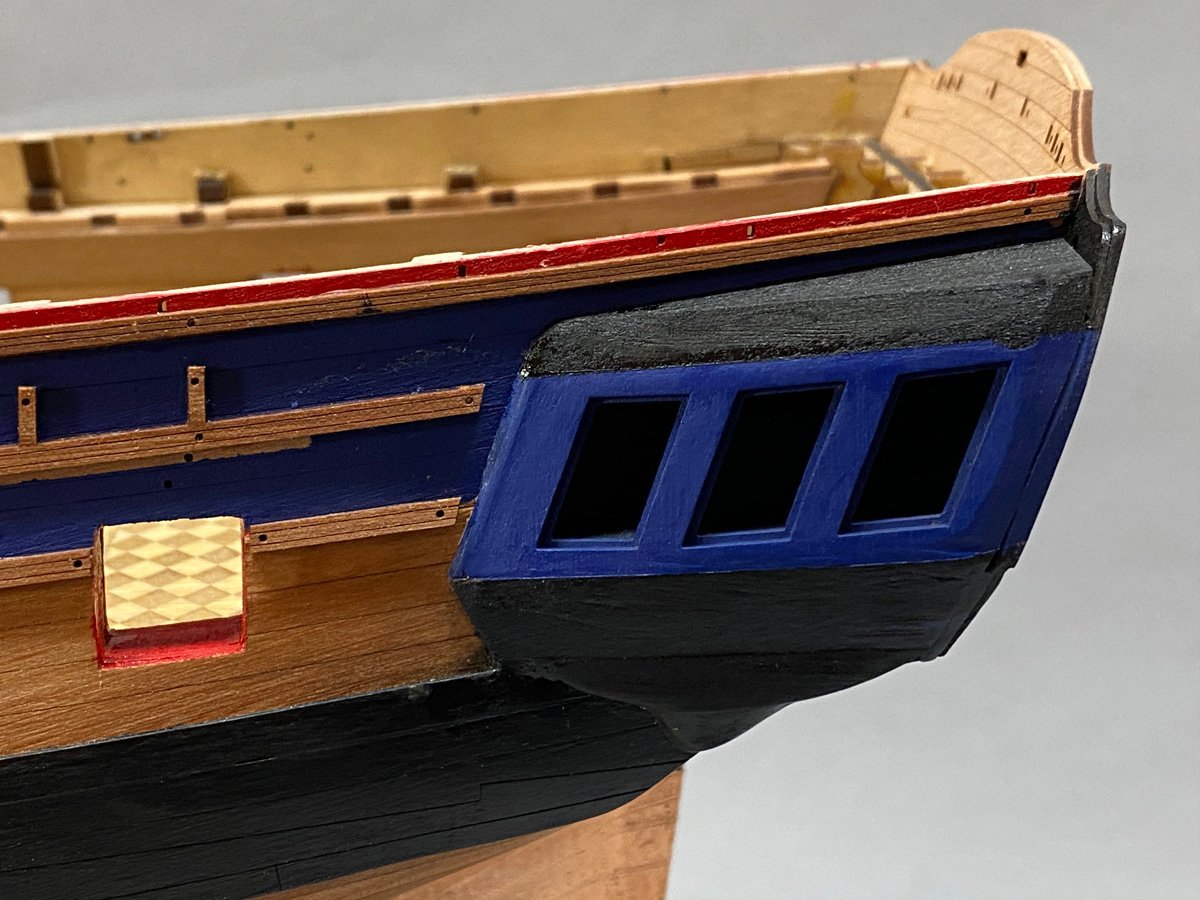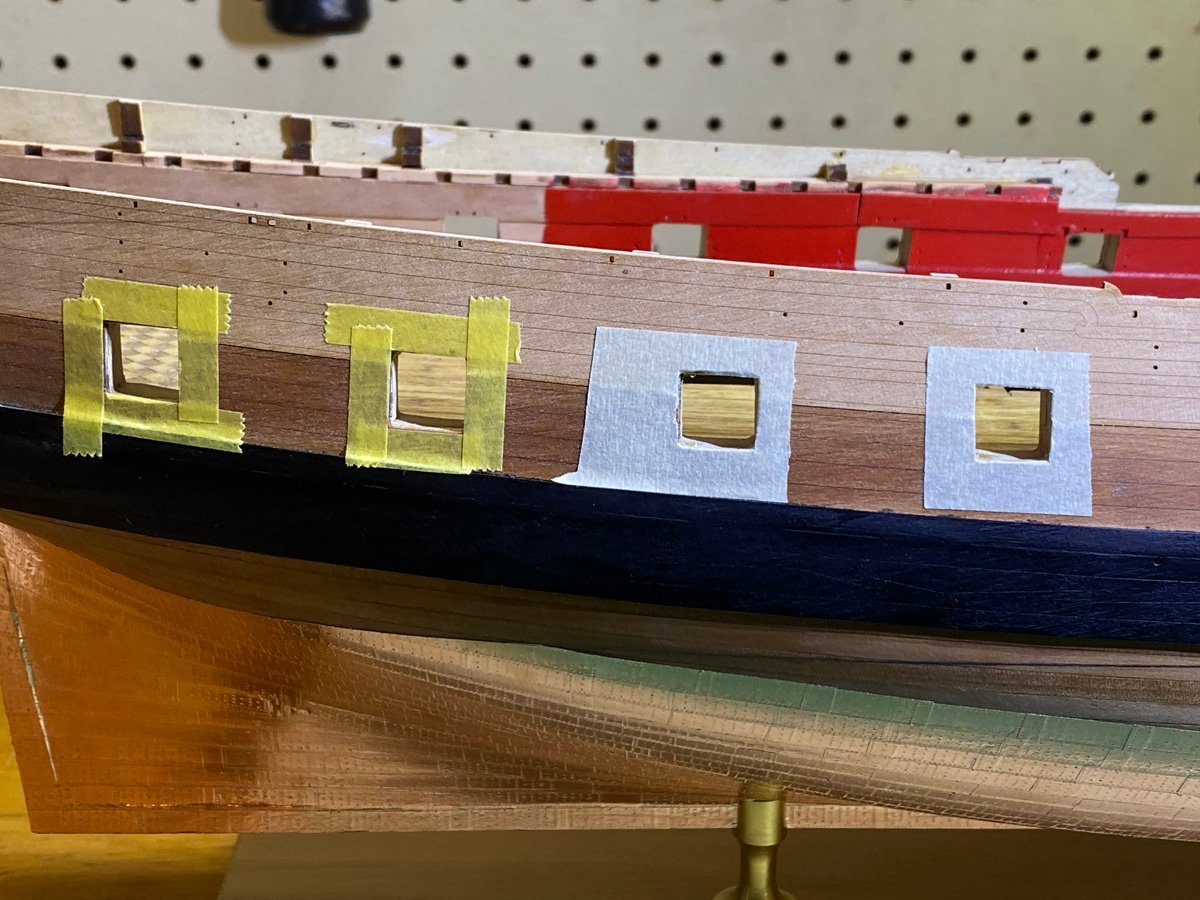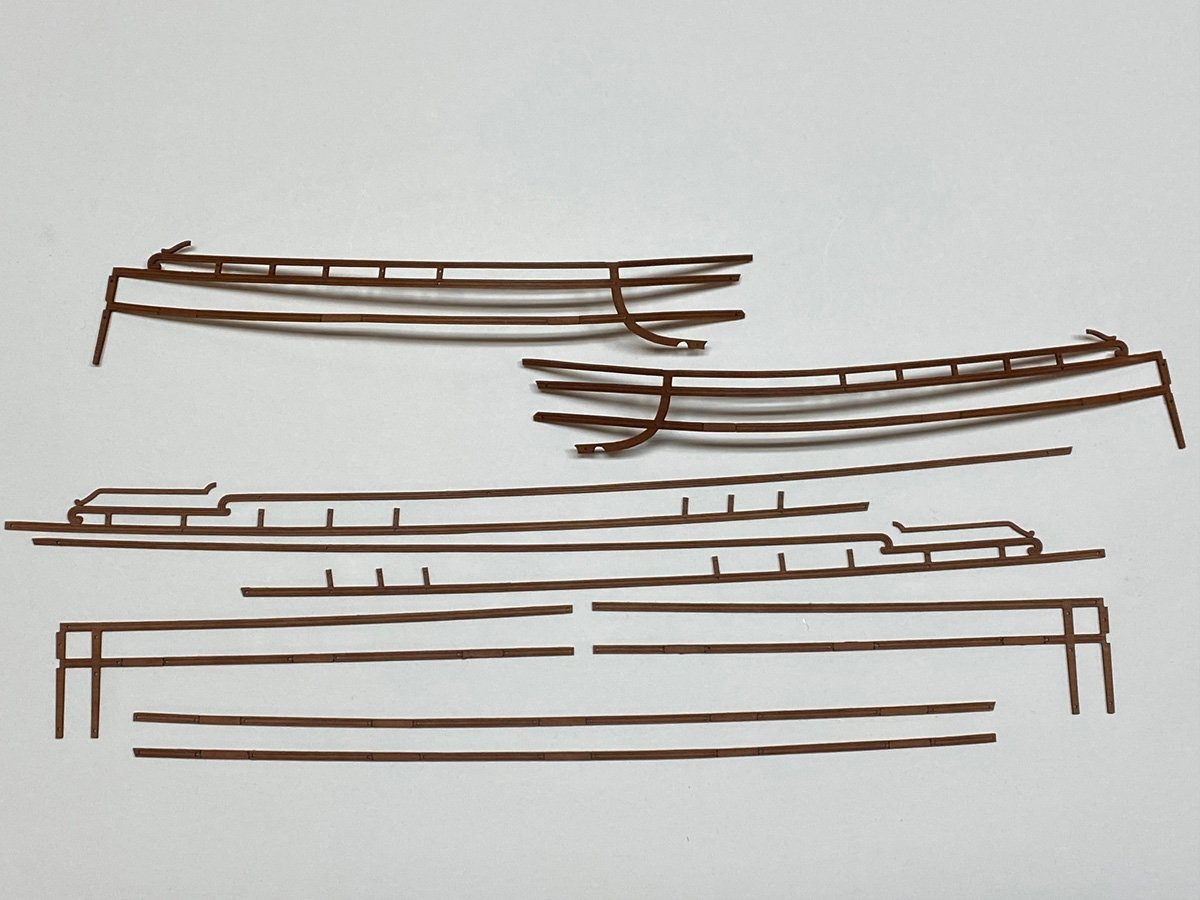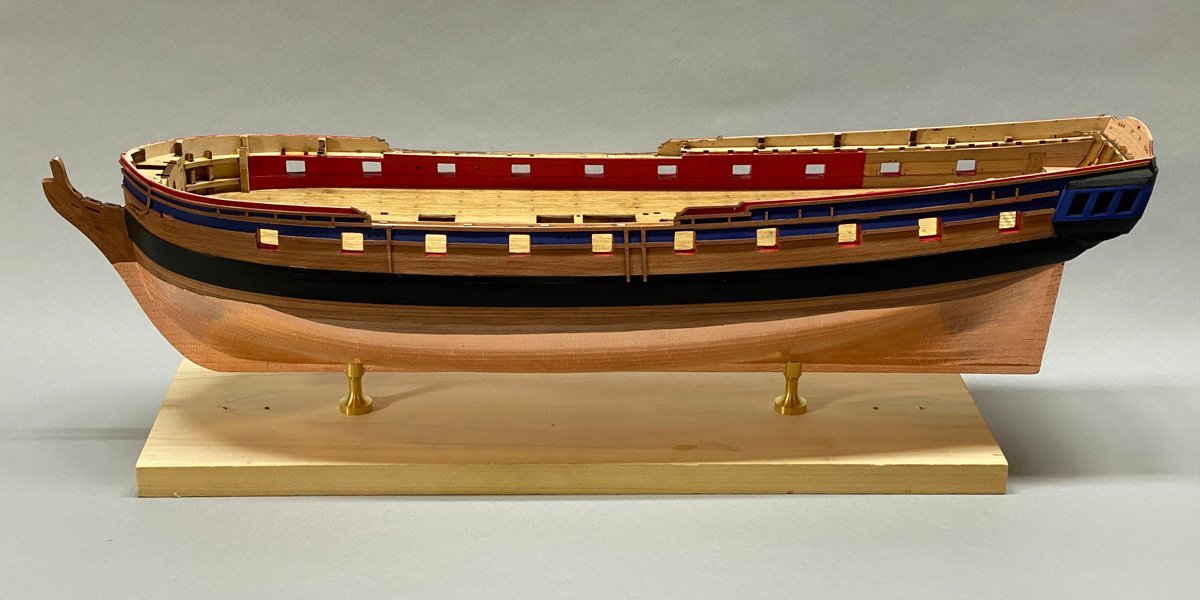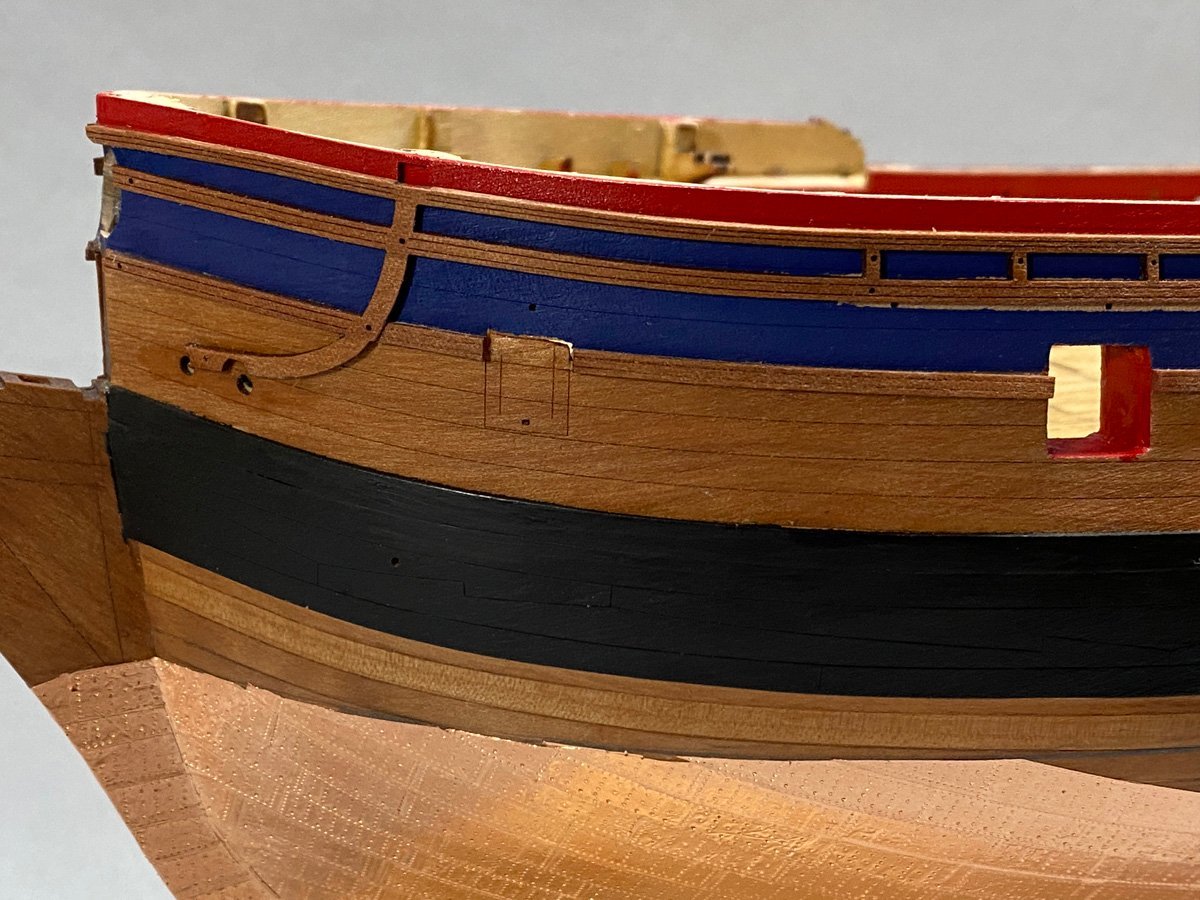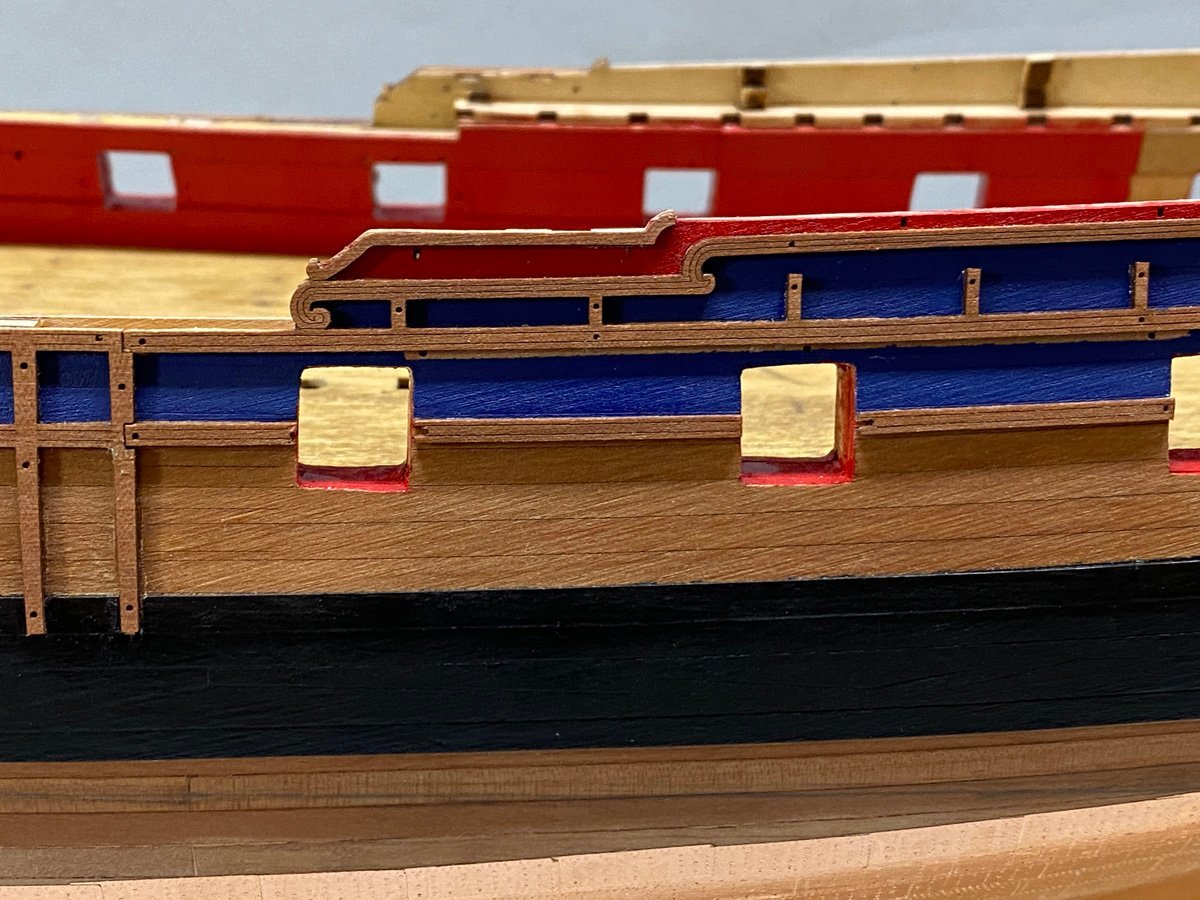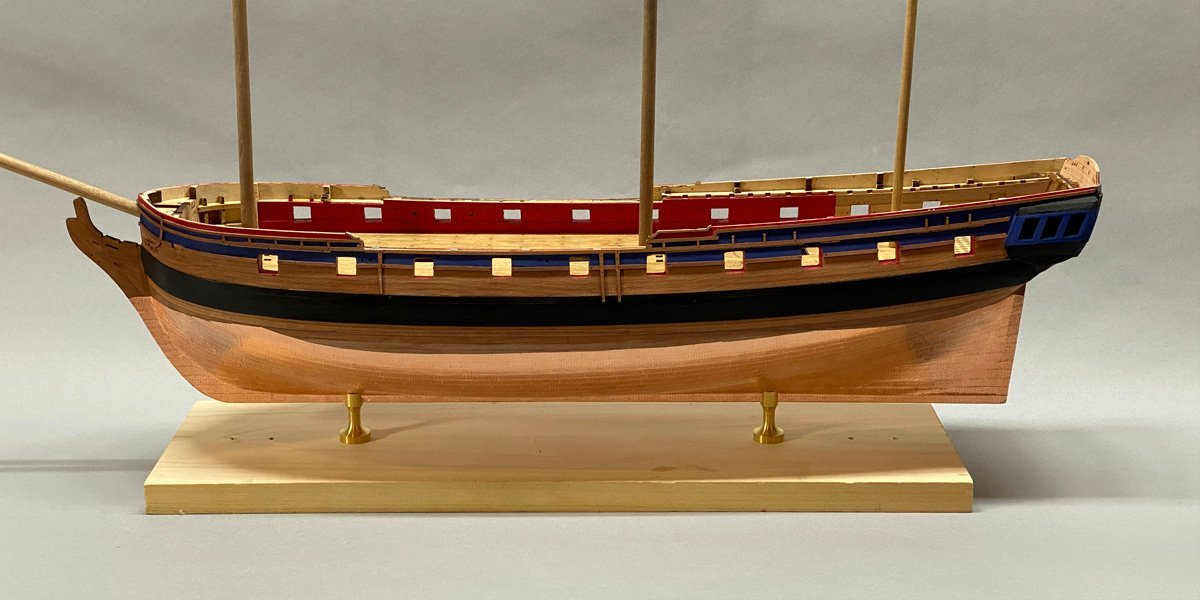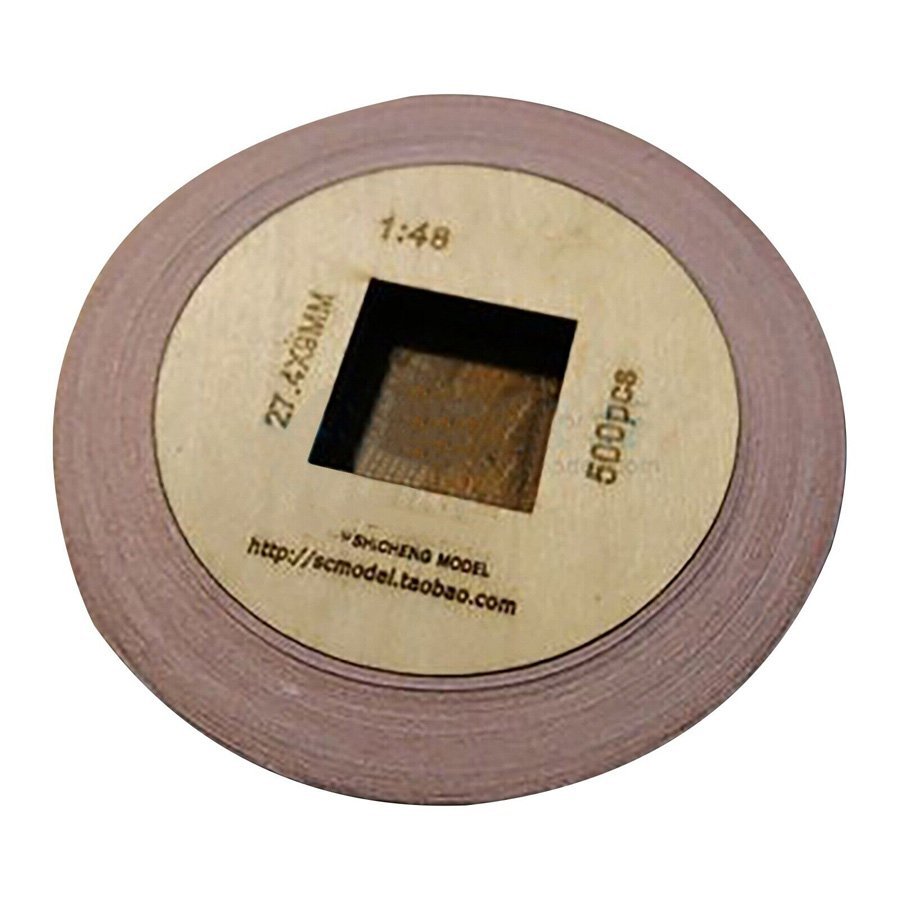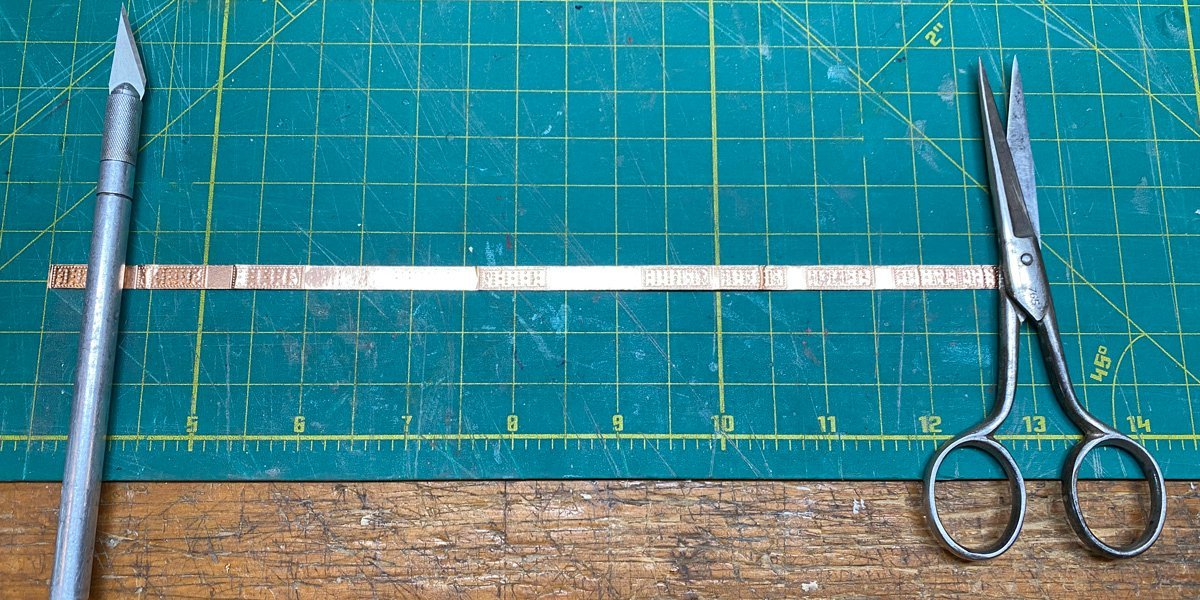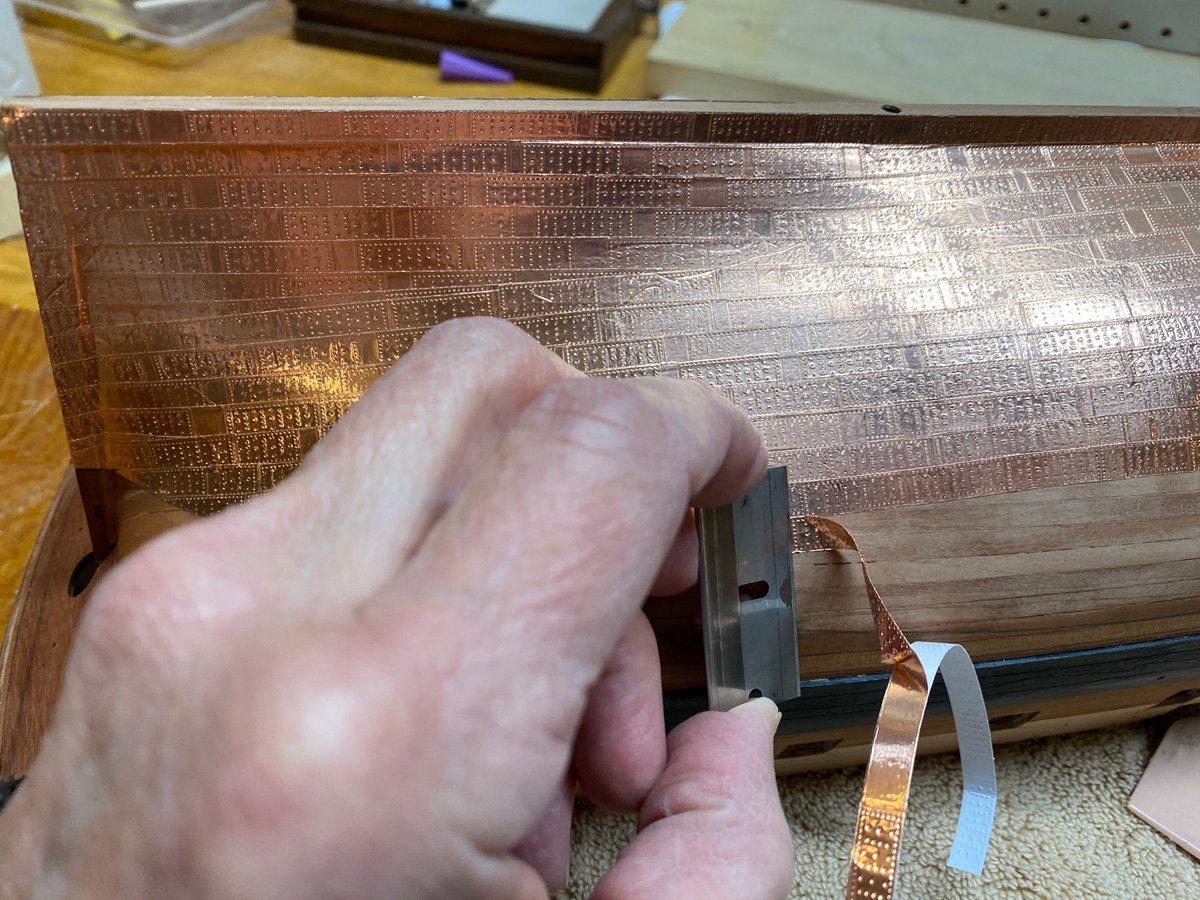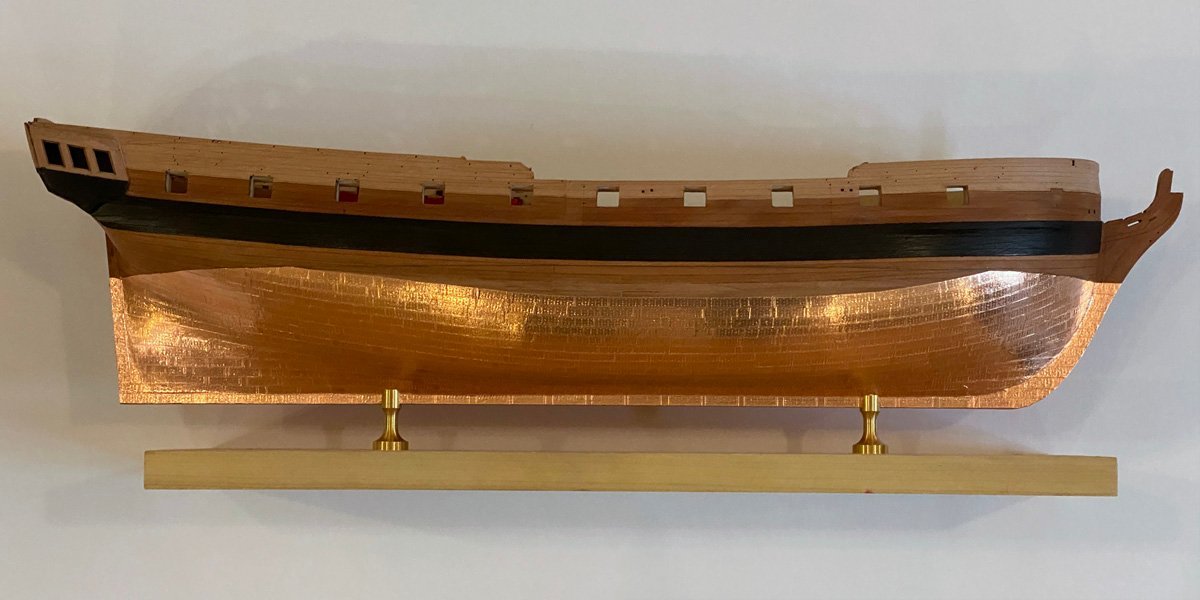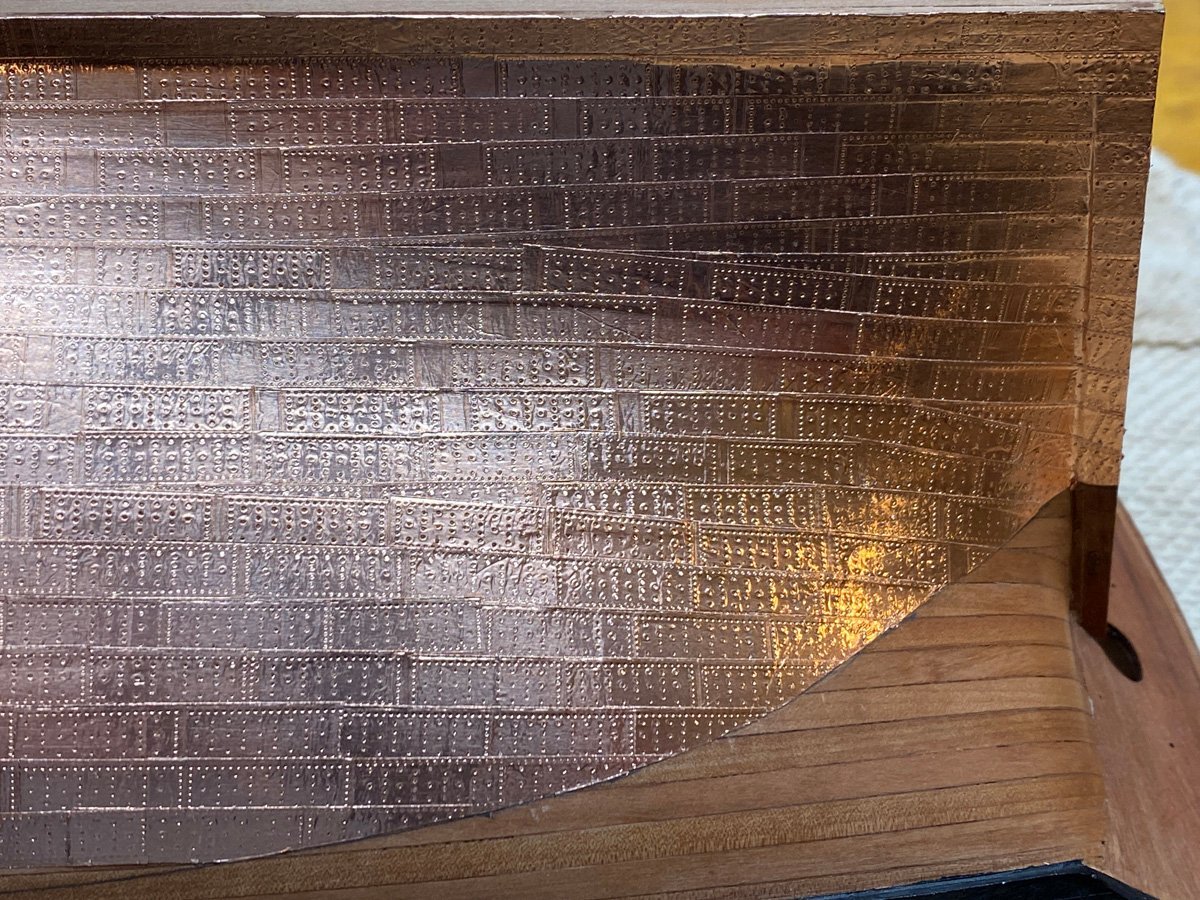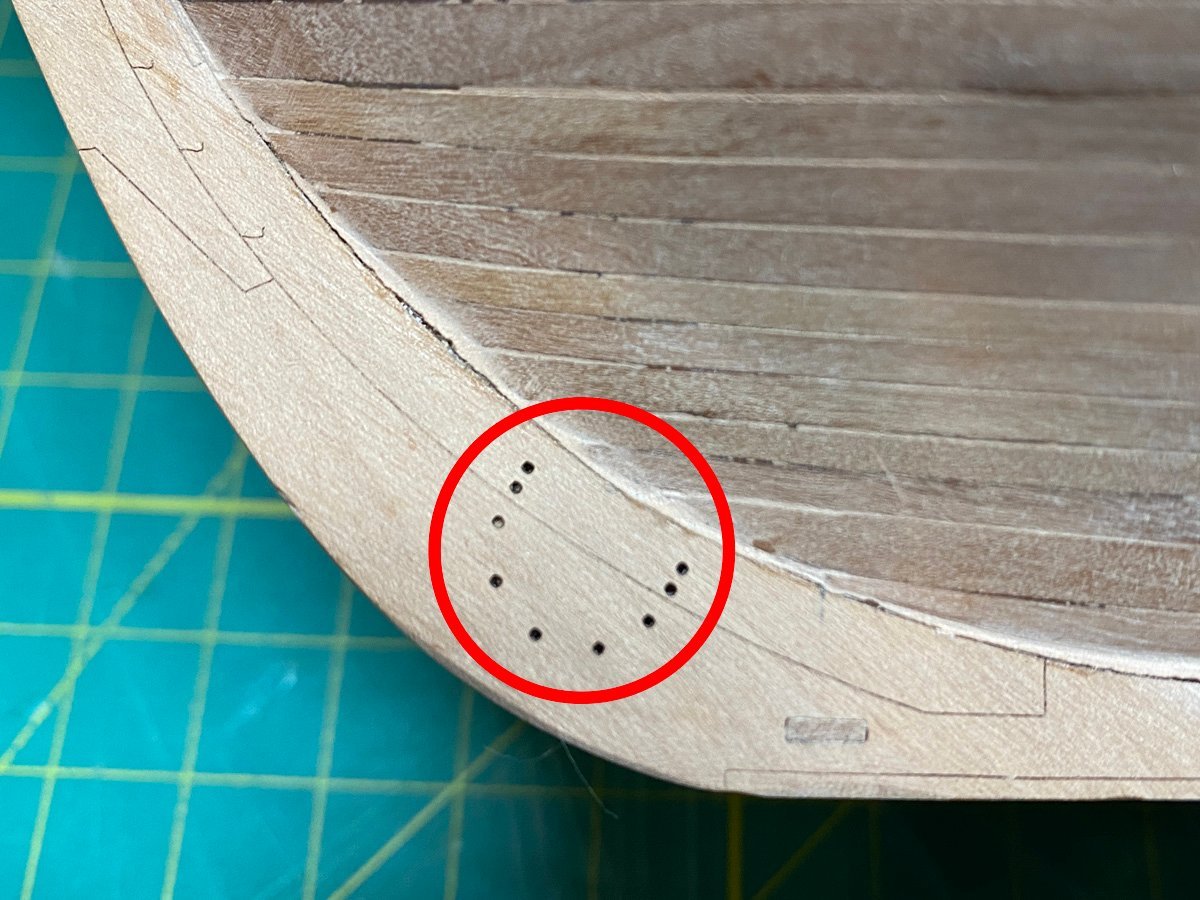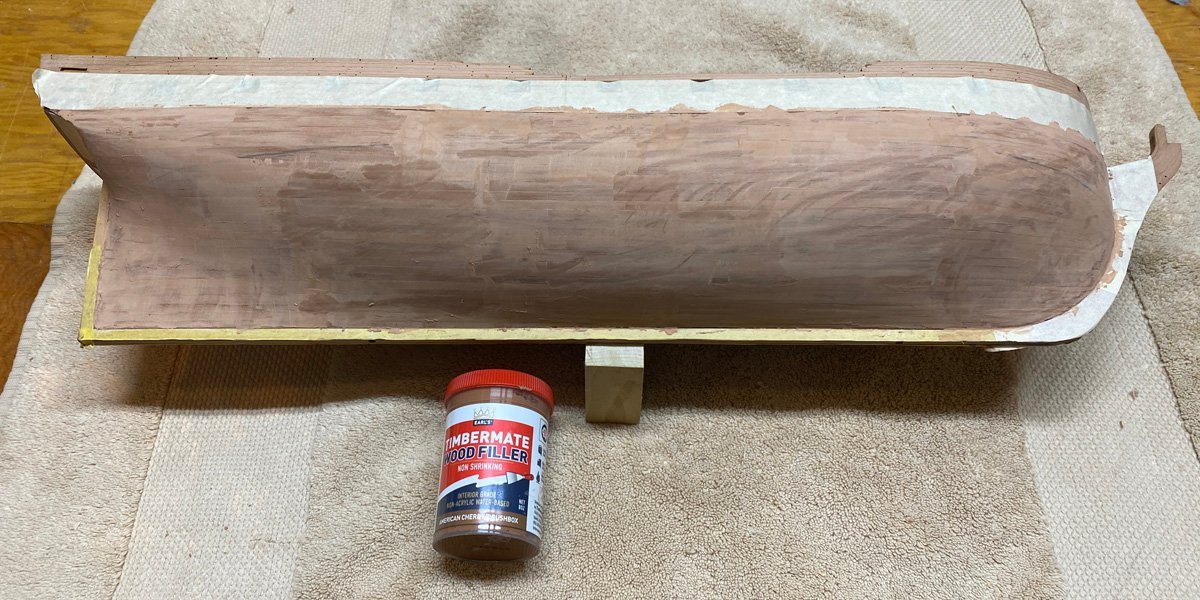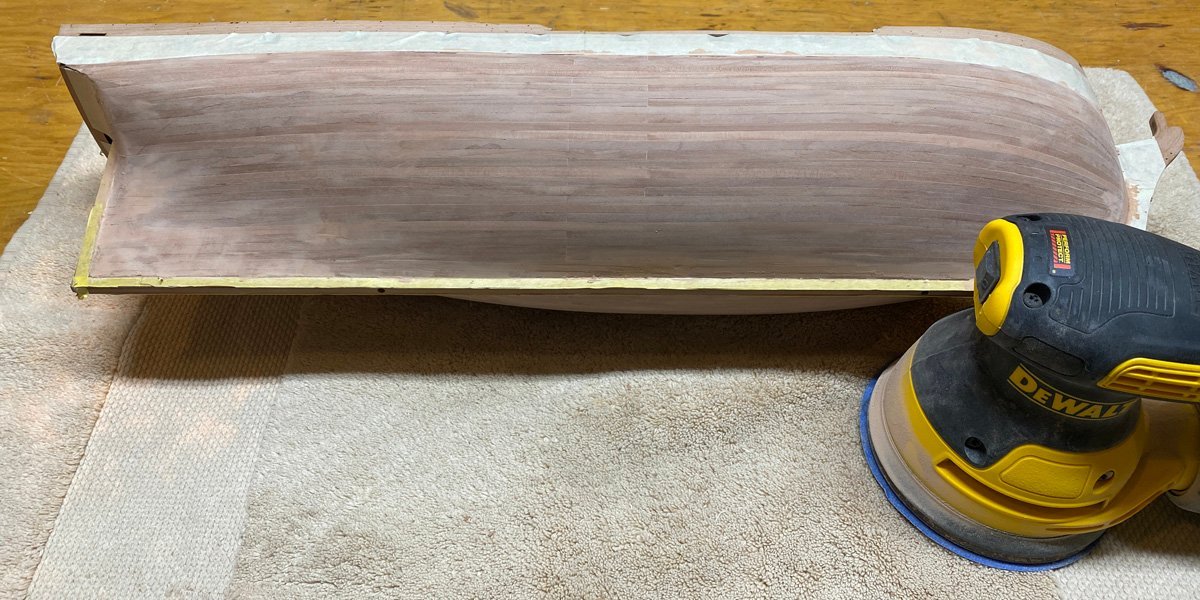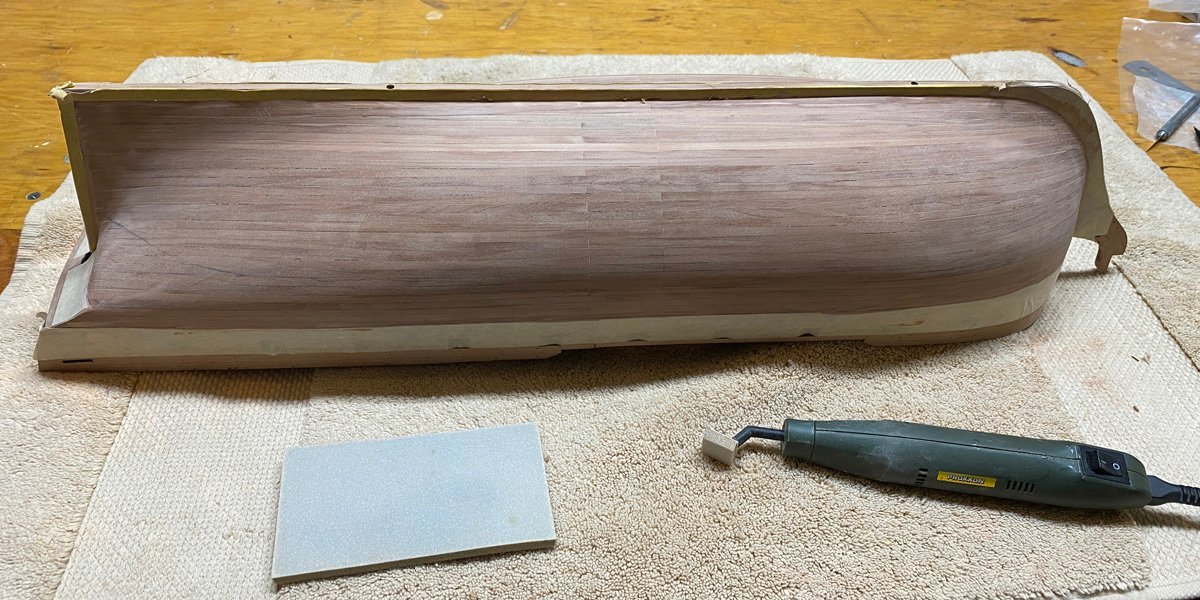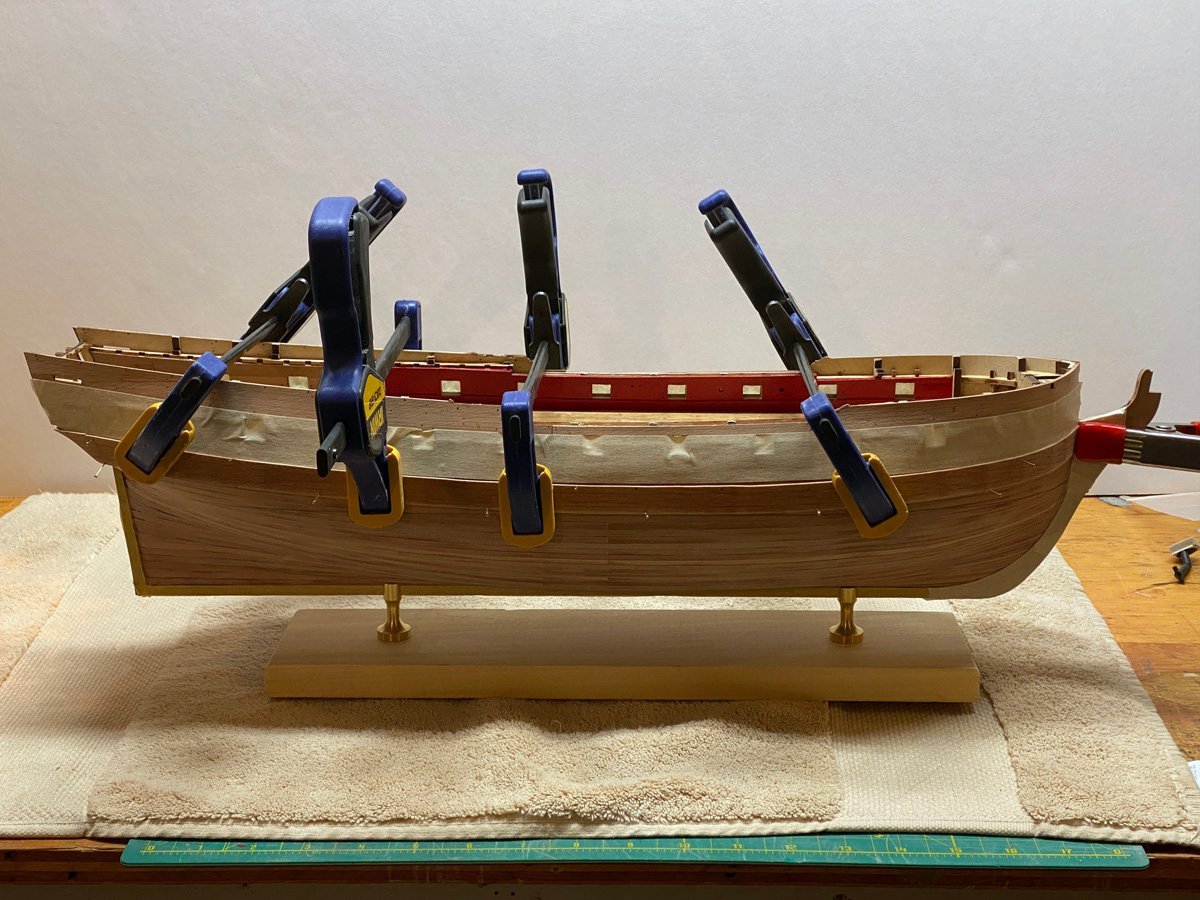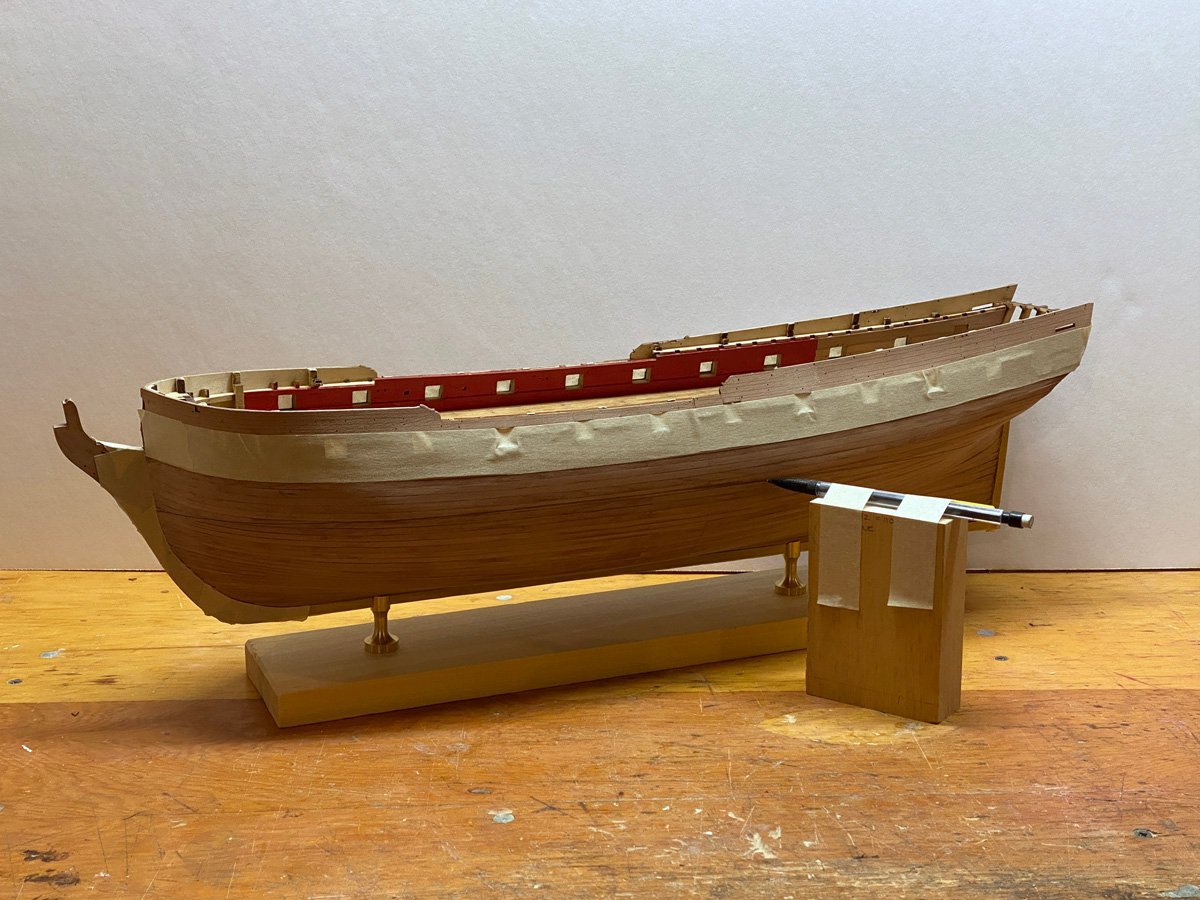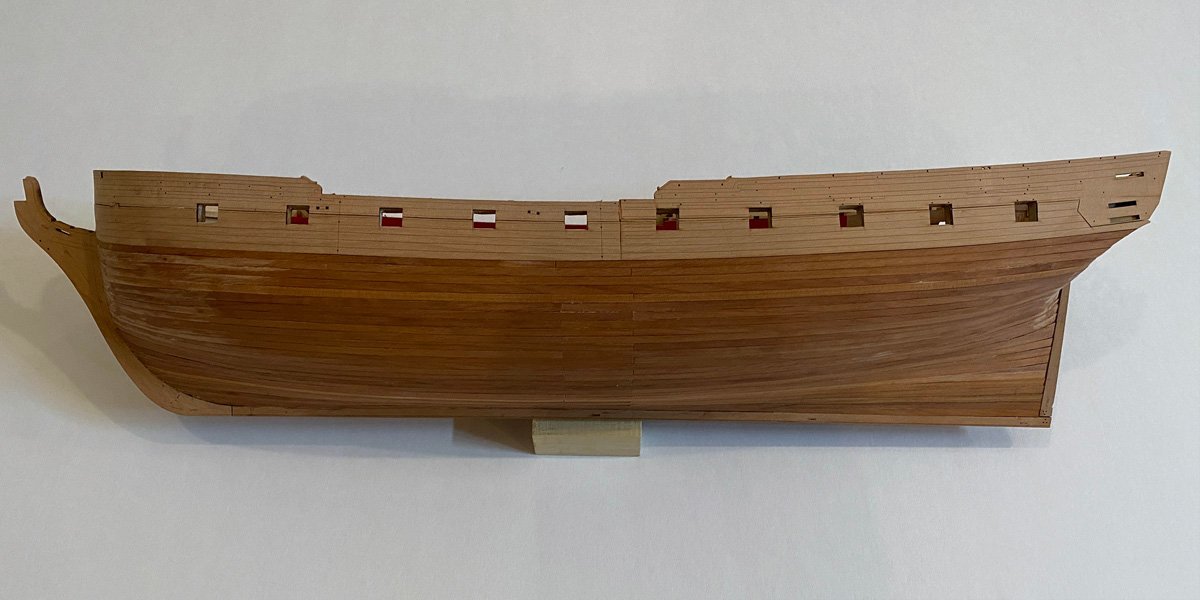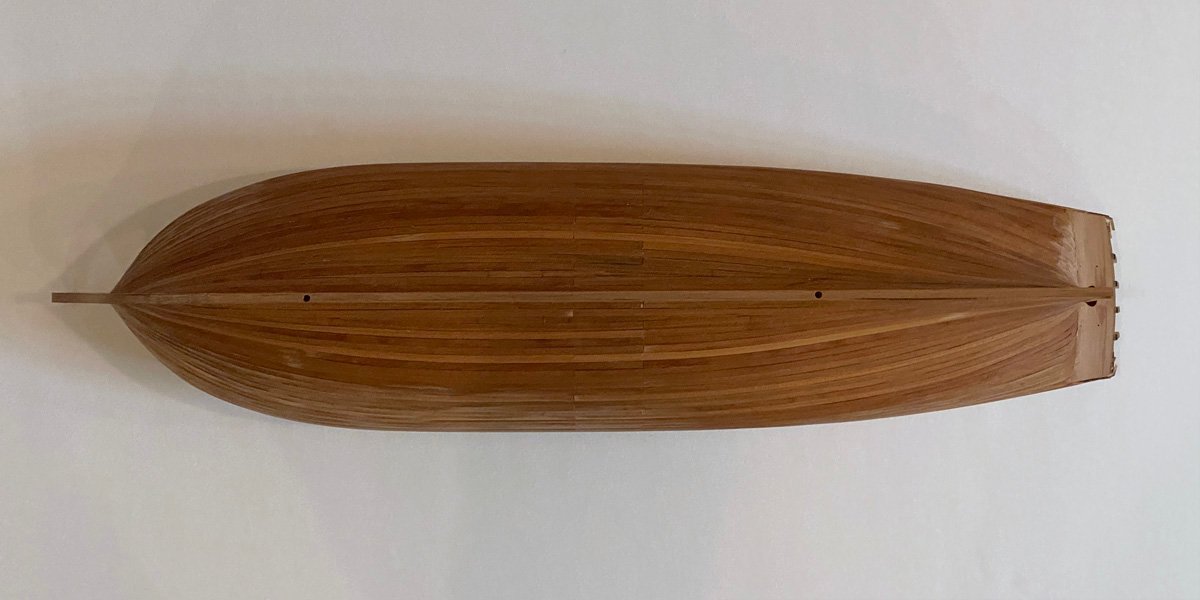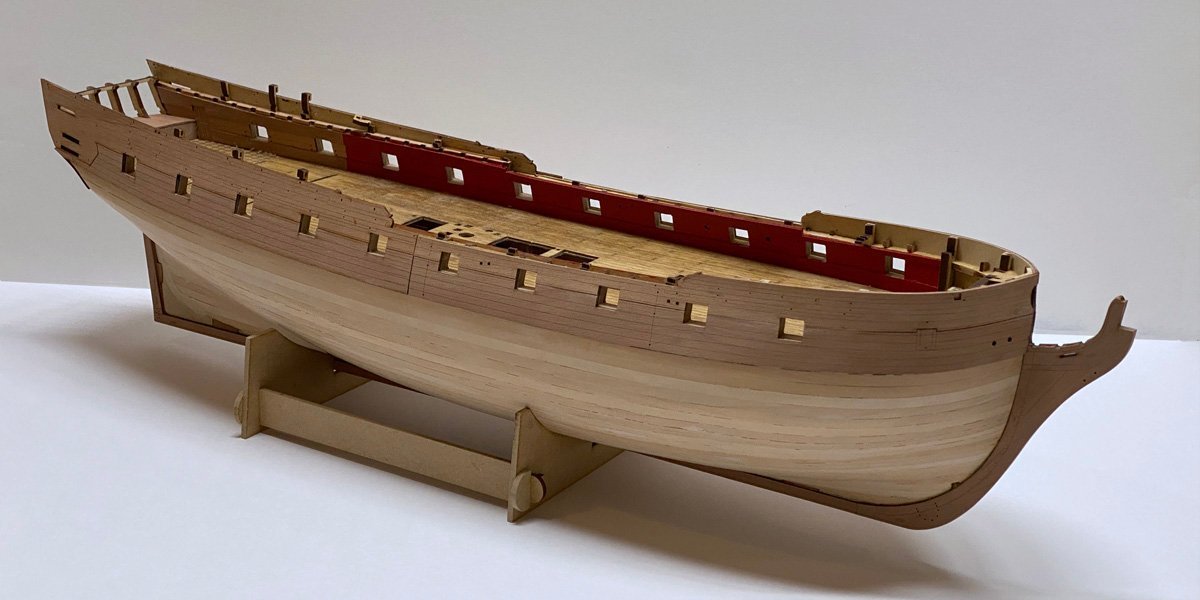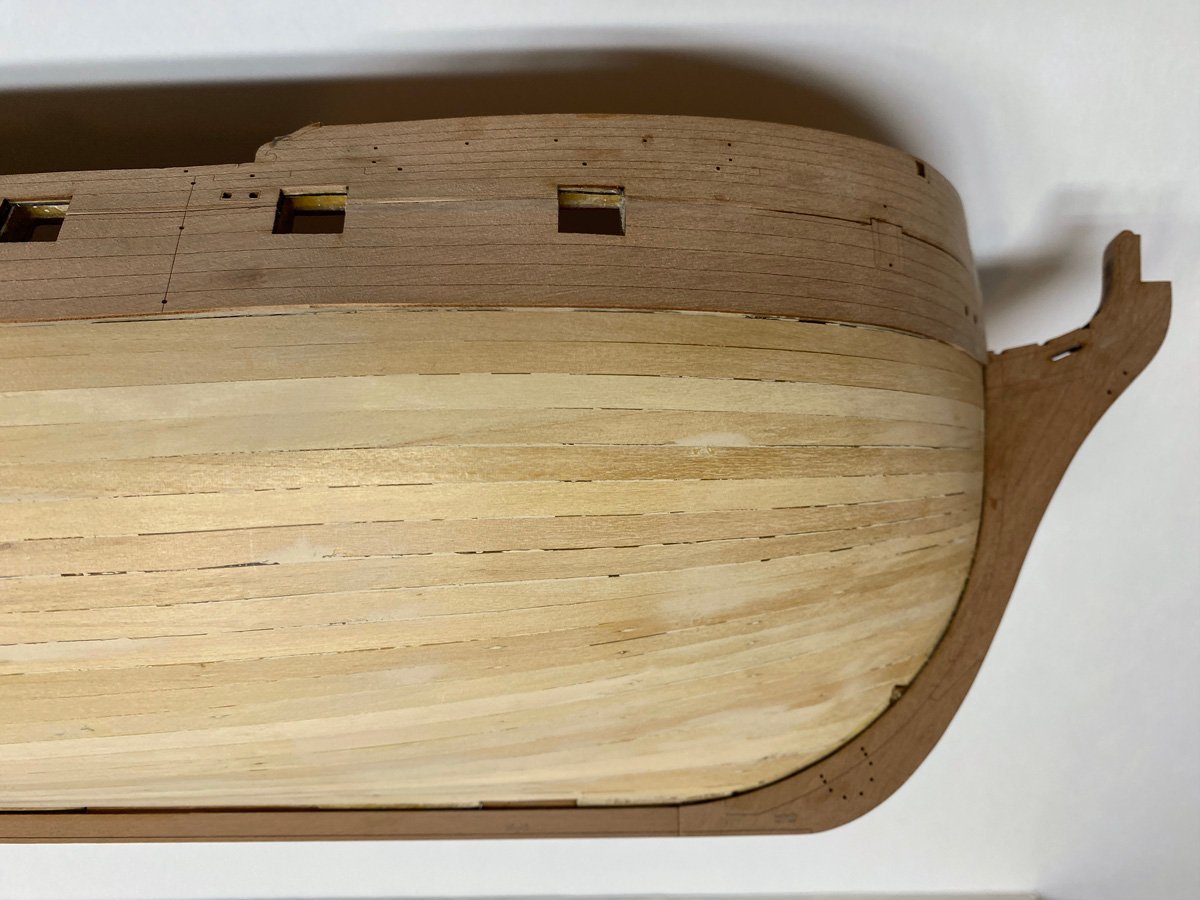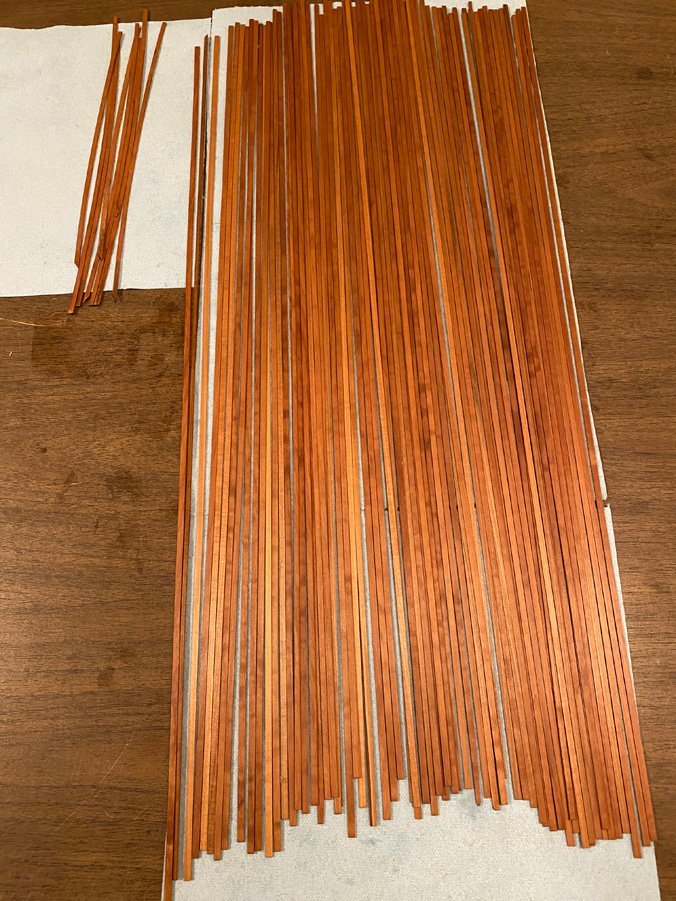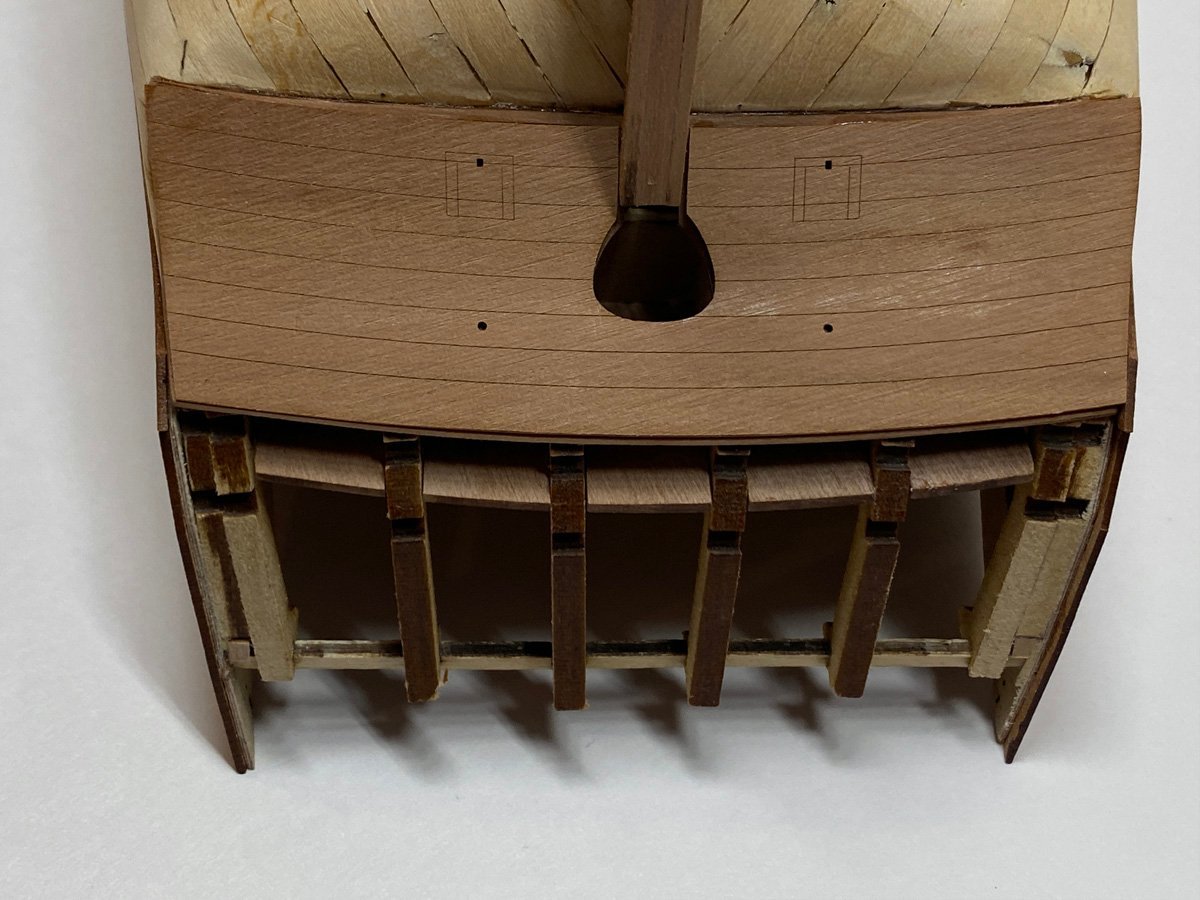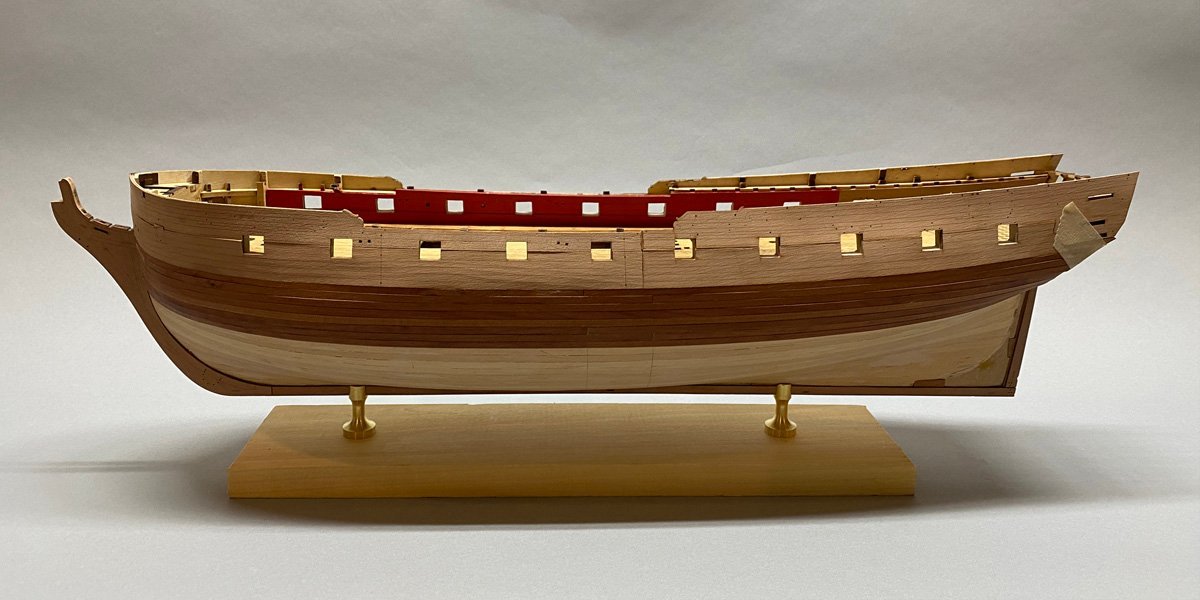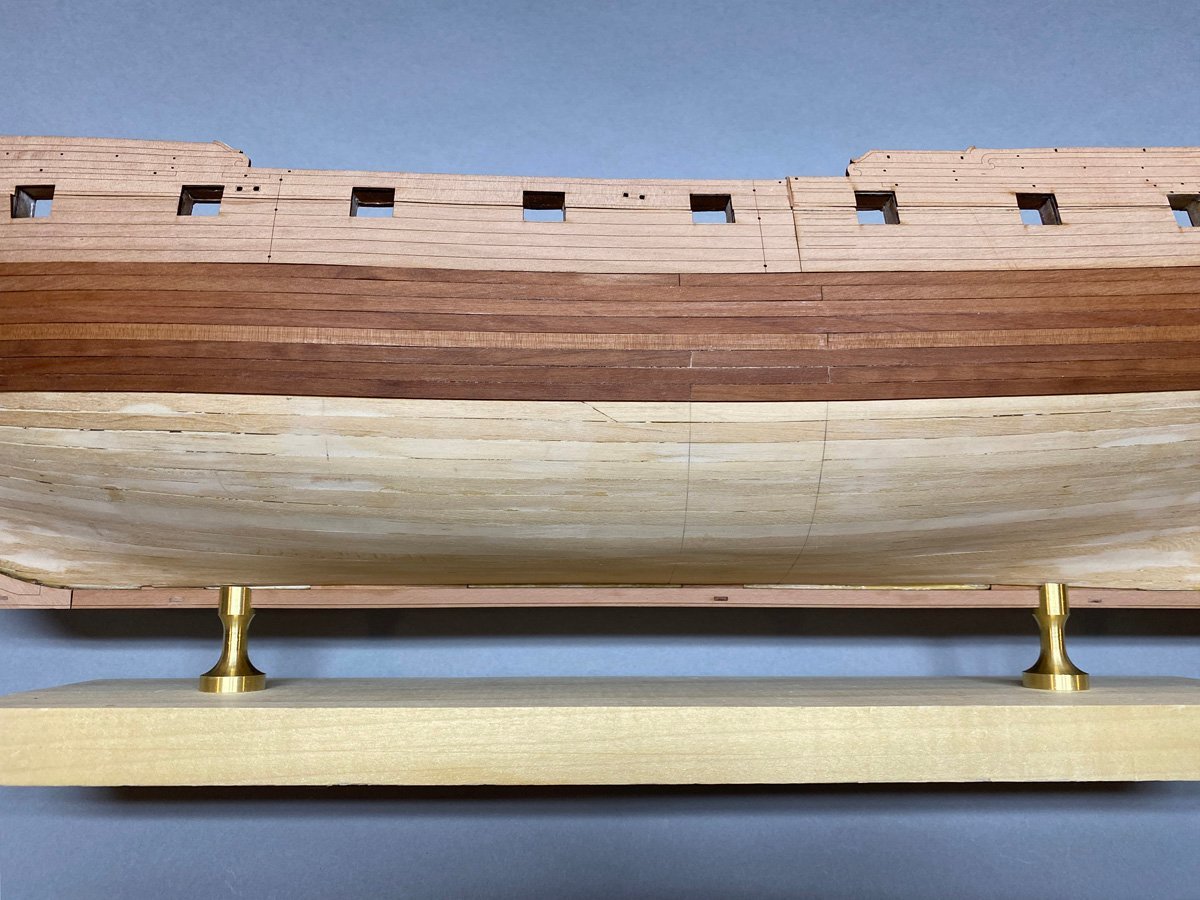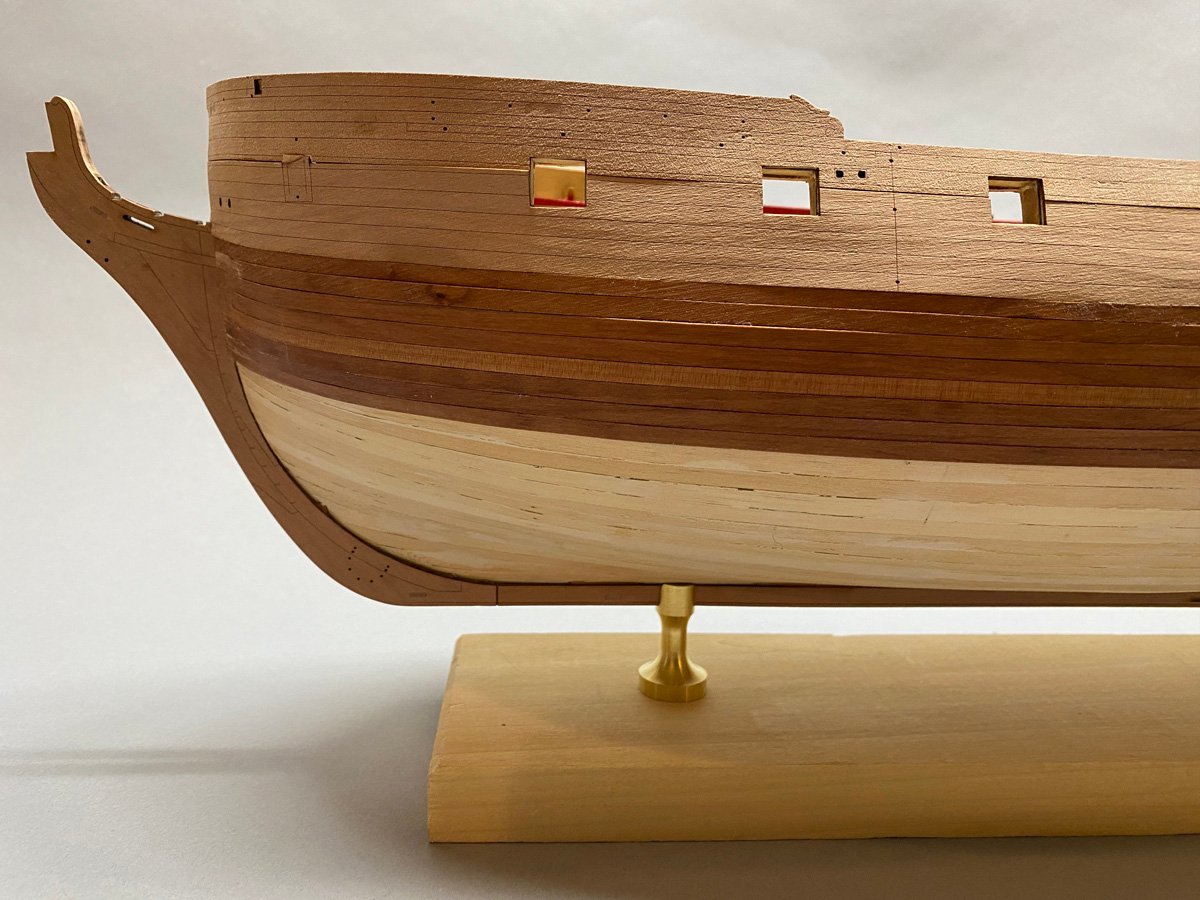-
Posts
695 -
Joined
-
Last visited
Content Type
Profiles
Forums
Gallery
Events
Everything posted by rvchima
-
Chains are Done, on to the Interior - Temporarily One of the first tasks on the interior is to place 6 eye bolts around each gun port, 120 in all. As Walter says, My curved hemostat was perfect for inserting the tiny eye bolts. Four more bolts with tiny rings go in the floor, and a wooden ring surrounds the mizzen mast. I was getting excited about working on the cabins, but today my extra copper foil finally arrived from China. So back to the hull and rudder.
- 96 replies
-
- Sphinx
- Vanguard Models
-
(and 2 more)
Tagged with:
-
- 96 replies
-
- Sphinx
- Vanguard Models
-
(and 2 more)
Tagged with:
-
Chain Gang The chains comprise a zillion PE parts that have to be darkened somehow. The manual suggests paint but I blackened the entire sheet using Novacan Black Patina for Solder. One of my other hobbies is stained glass and I use this product to darken the solder. I set the PE sheet in a plastic tray, brushed on a little patina liquid, rinsed, patted dry, and sprayed with Lemon Pledge. The blakening can rub off here and there, but not back to shiny brass so it leaves a rustic appearance. The bit where the parts attached to the sheet can be touched up with a black marker. The rings for the deadeyes must be expanded quite a bit for the deadeyes to fit. I butchered a few trying to open them with pliers, but found another way. I drilled holes in a scrap of wood slightly larger than the ID of the rings. 13/64" works well for the large deadeyes, 11/64" for the small. I placed the ring over the hole, and used a center punch to open the ring symmetrically. One tap with a small hammer and the deadeyes open right up. Drop the deadeye in, then use needle nosed pliers to tighten the rings back up. UPDATE - I've found that I don't need the drilled wood at all. I can push the rings over the center punch by hand easily. 10 chains done, 42 more or less to go.
- 96 replies
-
- Sphinx
- Vanguard Models
-
(and 2 more)
Tagged with:
-
Walter, How did you spread the rings that go around the deadeyes? I am having trouble inserting the deadeyes without damaging the finish. Rod
- 95 replies
-
- flirt
- vanguard models
-
(and 1 more)
Tagged with:
-
External Filigree Complete, 189 Hours, 87 days All the external photo-etched filigree took up most of a sheet of PE, so I masked off what wasn't supposed to be gold and painted the rest in place. That was the only way to keep track of everything. Sorry about the blurry image. The manual recommends attaching the parts with Pledge Future acrylic floor wax. Paint the area first, let it dry, put the filigree in place, then run more polish underneath to hold the part in place. Future is no longer available but the plastic modeling sites recommend Holloway Quick Shine. I got some and tried it on the first piece. It worked, but it was hard to hold the piece in place and the polish left shiny brush marks everywhere. So that didn't work well for me. Does anyone want a quart of floor polish? I ended up cutting the filigree into manageable sections, holding each piece with my double-sided tape sticks (see previous post,) and using a glue looper to wet the back with thin CA. Then I held the piece in place for a few seconds and it was done. In a few places on the starboard side my gun ports were too close to the upper rails and I had to omit some filigree. It took about 10 hours to do all the filigree.
- 96 replies
-
- Sphinx
- Vanguard Models
-
(and 2 more)
Tagged with:
-
Stern Details One advantage to having a fixed base is that you can do this: All the details on the stern are pretty intimidating, but you just jump in and start attaching parts. Speaking of attaching parts, I have been using canopy glue to hold the PE parts in place. Canopy glue is what RC modelers use to attach their canopies. It looks like plain white glue but it has an aggressive tack, dries clear, and is strong enough to hold a canopy on a fast RC model. It's also what @ccoyle uses to built card models. I use 3M double-sided tape to hold parts to scrap sticks for painting, and also attached to a small stick to hold parts for placement on the model.
- 96 replies
-
- Sphinx
- Vanguard Models
-
(and 2 more)
Tagged with:
-
Hey Mugje, I just ran into a problem where my rudder with the tiller arm wouldn't fit into the opening in the hull. I had to remove about 6mm of the rudder post to make it fit. I recommend removing the main rudder piece from the 3 mm sheet now to see if it fits. It will be easier to fix now than later.
-
Channels, Knees, and Bow Trim The channels are all attached with multiple brass pins. The laser markings show exactly where to put those pins. There are 26 knees to cut, sand, and paint, so it all took awhile. Fore channels. The stove is temporary for now. Main channels Mizzen channels I put some blue on the bow and added the bow grating and some trim. I have a little more work to do up front, then on to the stern.
- 96 replies
-
- Sphinx
- Vanguard Models
-
(and 2 more)
Tagged with:
-
Minor Problem with the Rudder After assembling the rudder I realized that the top with the tiller would not fit into the hole in the hull. The manual shows the top of the rudder post ending a bit lower, at the juncture between the planking and stern piece, so I cut about 1/4" off of the rudder post and everything fits now. I don't know why the rudder post was too high - everything else fit together perfectly. I ran out of copper foil and had to order more from China, so it will be 3 weeks before I can complete the rudder.
- 96 replies
-
- Sphinx
- Vanguard Models
-
(and 2 more)
Tagged with:
-
Side Trim Completed The upper sides of the hull are mostly blue with splashes of red. The gun ports are red inside. This all required a lot of masking. I started to mask off each gun port with 4 strips of tape but realized that I could put a large piece over each port and cut out the centers. After painting, a number of extremely delicate trim strips were attached. I stained them all with Watco natural oil stain on the top only. The bow pieces were soaked in water and pre-bent. The manual says to glue them with PVA and lots of clamps. I did exactly that, but as soon as I removed the clamps half of the pieces fell right off. It's tempting to blame the oil stain, but I was very careful to leave the wood bare on both sides of the joint. Maybe the PVA is soaking in and drying too quickly? Anyway, I cleaned off the dried PVA and reglued everything with CA. It's not going anywhere now. Did I mention that I finished the quarter galleries a few days ago? There are a lot of pieces in there that required a lot of trial and error fitting. Just checking that everything fits.
- 96 replies
-
- Sphinx
- Vanguard Models
-
(and 2 more)
Tagged with:
-
Yes, those are the gaps. Big mistake leaving them there. I cut them out further up the hull.
- 96 replies
-
- Sphinx
- Vanguard Models
-
(and 2 more)
Tagged with:
-
Thank you for all the clarifications, and especially for the link to the RMG collections site. I have browsed RMG many times and never stumbled on the best part! And now I'll have to buy several of Brian Lavery's books, even if it's too late for the Sphinx.
- 96 replies
-
- Sphinx
- Vanguard Models
-
(and 2 more)
Tagged with:
-
I will admit to complete ignorance on this. Who is Lavery? If I search for Sphinx on https://www.rmg.co.uk there are zero results. Is there a separate site for research?
- 96 replies
-
- Sphinx
- Vanguard Models
-
(and 2 more)
Tagged with:
-
Beautiful work Walter, and all in a month's time.
- 95 replies
-
- flirt
- vanguard models
-
(and 1 more)
Tagged with:
-
An Almost Brilliant Method for Coppering In the last few months since I ordered my model this product has popped up on eBay. It is standard copper foil for stained glass with plate patterns for model ships stamped on it. It is available in 1:48, 1:75, and 1:96 scale, 500 pieces to a roll. There are now over 30 vendors, all in China, selling what appears to be identical products. I ordered two rolls at 1:75 scale at the end of November. They were delivered about three weeks later. I just used them up on the Sphinx, ran a bit short, and just ordered another roll. I also ordered a second roll at 1:48 scale to cap the keel and rudder post. The plates were nicely spaced for the first few feet, and I thought I could cover entire rows without cutting the strips. Then the spacing became irregular, with small gaps between the plates. I decided that I could live with that. Then very long gaps started to appear in the roll, and I had to cut individual plates. It's easy to cut the foil with scissors but tedious to remove the plastic backing. A much easier technique is to cut a length of foil about 18" long, attach the end to the hull, and tear the foil against a razor blade held after the next plate. Then repeat. I coppered the rest of the hull in this manner, basically with individual plates. I wondered if I had been cheated of plates, so when I opened the second roll I measured the length and counted the plates - 32 feet, 509 plates as advertised. The 1:75 plates are 18 mm x 6 mm, almost exactly 1 cm^2. They stick very well and look good. I do regret leaving the blank gaps near the keel. Live and learn. The product would be perfect if the plates were spaced without gaps so that you could lay down entire rows without cutting (at least until the curvature got too great.) It would be nice if some US vendors carried it. I have about an inch left to cover on each side, plus the keel, the rudder, and a band around the water line. I will weather the copper with vinegar and salt when it is all applied.
- 96 replies
-
- Sphinx
- Vanguard Models
-
(and 2 more)
Tagged with:
-
Just to make sure that I understand, around 1782 Sphinx had 6 12-pounder carronades added to her quarterdeck, and possibly 2 more to the forecastle, in addition to the 20 9-pounder carriage guns on the gun deck. Is that correct?
- 96 replies
-
- Sphinx
- Vanguard Models
-
(and 2 more)
Tagged with:
-
That's what I will do. I wondered about having iron and copper in contact, but ship builders didn't understand Galvanic corrosion at the time. 😬 Yikes! I was afraid that other changes would show up in six years. Since the coppered hull is much more obvious than gun barrels to the casual observer (like me), I think I will copper the hull and ignore a few years of historical inaccuracy. But thank you kindly for the information.
- 96 replies
-
- Sphinx
- Vanguard Models
-
(and 2 more)
Tagged with:
-
Spoiler Alert - I am about to copper the hull. The Sphinx was coppered in 1781. Would the copper go under, over, or around the iron reinforcement plates? Same question for the rudder hinges.
- 96 replies
-
- Sphinx
- Vanguard Models
-
(and 2 more)
Tagged with:
-
Thank you James! That seems obvious in retrospect.
- 96 replies
-
- Sphinx
- Vanguard Models
-
(and 2 more)
Tagged with:
-
- 96 replies
-
- Sphinx
- Vanguard Models
-
(and 2 more)
Tagged with:
-
Filler 2 hours with Timbermate wood filler. It looks like my hull is made out of clay. 5 minutes with a random orbit sander - nearly smooth. 20 minutes with a sanding pad and Proxxon sander - ready to paint.
- 96 replies
-
- Sphinx
- Vanguard Models
-
(and 2 more)
Tagged with:
-
Sanding Done, Filler Needed I did maybe 80% of my sanding with a random orbit sander, and much of the rest with a Proxxon pencil sander. It's mostly done but I had to order some new wood filler to match the color of the pear. It should come tomorrow. In the meantime I marked the waterline with a high-tech marking tool, and wet-bent the main wales to shape.
- 96 replies
-
- Sphinx
- Vanguard Models
-
(and 2 more)
Tagged with:
-
Second Planking Complete I put in a marathon build yesterday and completed the second layer of planking. "Completed" as in "all the planks are glued down." I've done a little sanding but still have a lot of sanding and filling to do. The second layer of planks took about 28 hours for 29 planks on each side. So roughly 1/2 hour per plank.
- 96 replies
-
- Sphinx
- Vanguard Models
-
(and 2 more)
Tagged with:
-
Outer Bulwarks, Keel, Bow, Rudder Post, & Stern The outer bulwarks are covered with 8 pieces of 0.8 mm pear with details burned in by the laser. The pieces fit almost perfectly but were tricky to attach. The manual says to coat the hull with dilute PVA and hold the pieces with a zillion clamps. The clamps just didn't fit very well, so when I unclamped the first piece there were several gaps along the bottom that had to be fixed carefully with CA. I attached the remaining 7 pieces by coating the hull with PVA over the center of each piece, and putting a bead of CA around the perimeter. Then I aligned the piece and held it in place for 20 seconds. No clamps necessary. The keel, bow, and rudder post start as 3 mm MDF. After the first layer of planking they are covered with a 0.8 mm veneer of pear. This brilliant scheme leaves a perfect rabbet for the second layer of planking. The lower stern counter also gets a layer of veneer. Second Layer of Planking Before applying the second layer of planking I oiled the planks with Watco natural oil. That way if when I get CA on the planks they will already be oiled. That pear takes the stain beautifully. My pedestals arrived so I attached a temporary stand. The second layer of planking takes a while to apply, but it is relatively easy with a solid hull underneath. The manual recommends splitting the planks so the front and rear joints can be fit easily. There are some edges standing proud that will be sanded down later. The trim pieces on the bulwarks have some fuzzy grain on them , but the laser detail is too fine to sand. Don't know what I'll do about that.
- 96 replies
-
- Sphinx
- Vanguard Models
-
(and 2 more)
Tagged with:
About us
Modelshipworld - Advancing Ship Modeling through Research
SSL Secured
Your security is important for us so this Website is SSL-Secured
NRG Mailing Address
Nautical Research Guild
237 South Lincoln Street
Westmont IL, 60559-1917
Model Ship World ® and the MSW logo are Registered Trademarks, and belong to the Nautical Research Guild (United States Patent and Trademark Office: No. 6,929,264 & No. 6,929,274, registered Dec. 20, 2022)
Helpful Links
About the NRG
If you enjoy building ship models that are historically accurate as well as beautiful, then The Nautical Research Guild (NRG) is just right for you.
The Guild is a non-profit educational organization whose mission is to “Advance Ship Modeling Through Research”. We provide support to our members in their efforts to raise the quality of their model ships.
The Nautical Research Guild has published our world-renowned quarterly magazine, The Nautical Research Journal, since 1955. The pages of the Journal are full of articles by accomplished ship modelers who show you how they create those exquisite details on their models, and by maritime historians who show you the correct details to build. The Journal is available in both print and digital editions. Go to the NRG web site (www.thenrg.org) to download a complimentary digital copy of the Journal. The NRG also publishes plan sets, books and compilations of back issues of the Journal and the former Ships in Scale and Model Ship Builder magazines.



